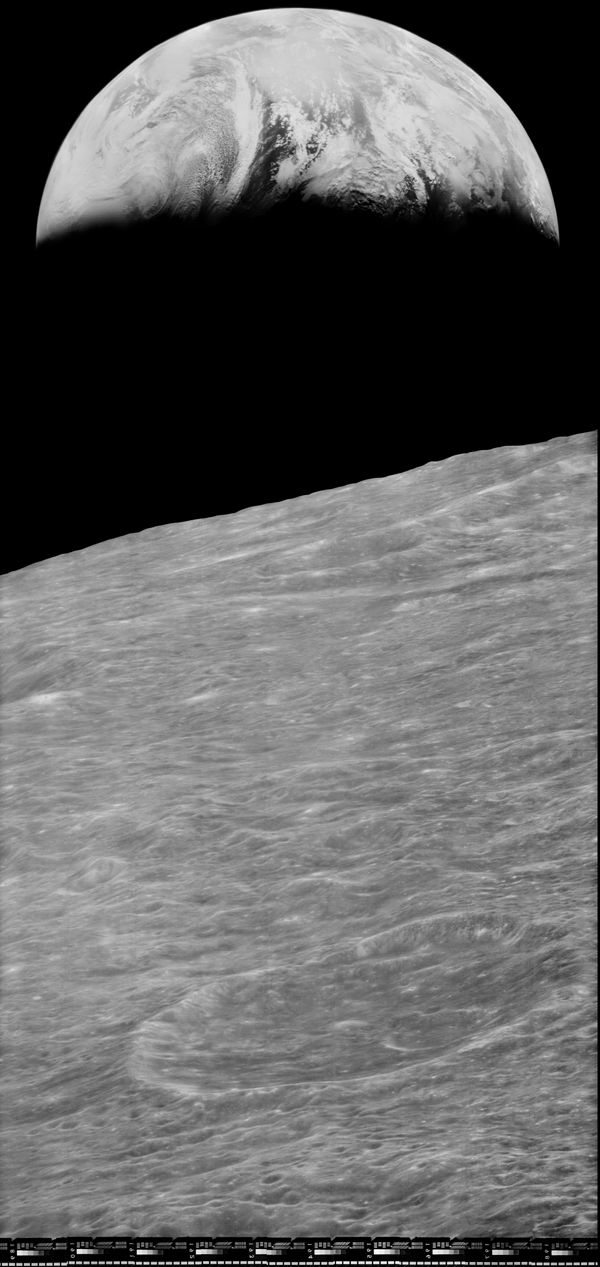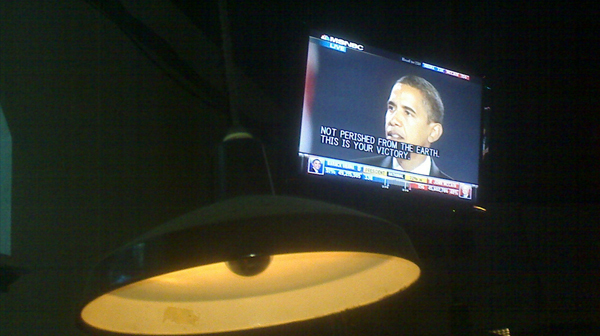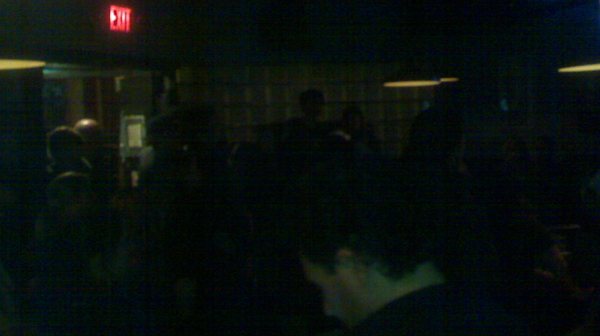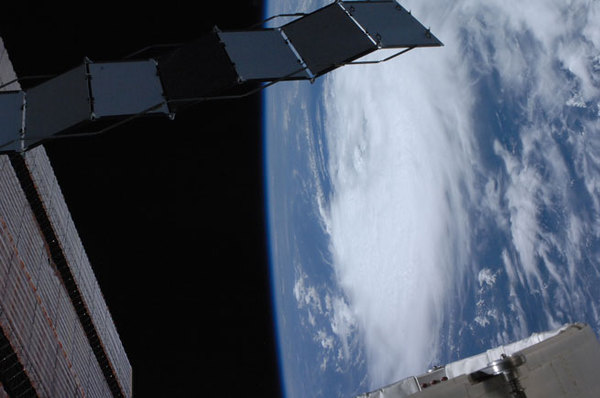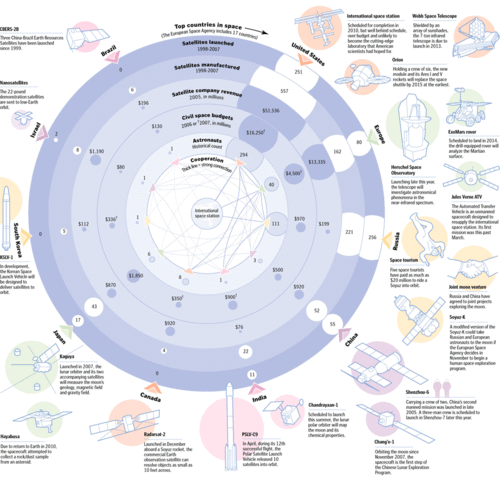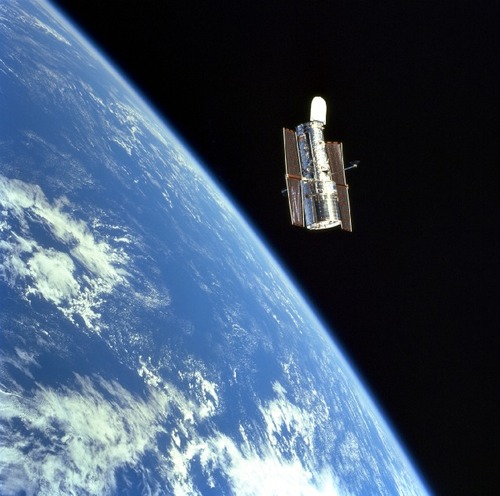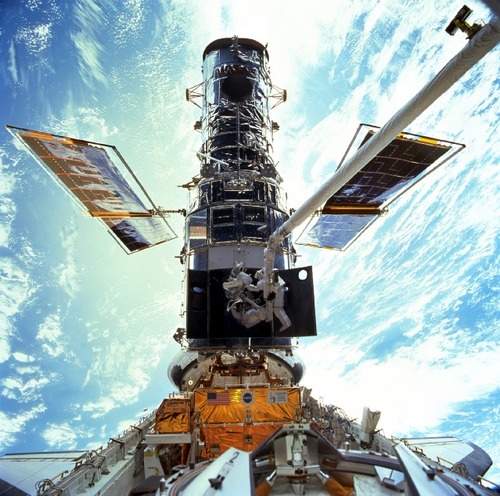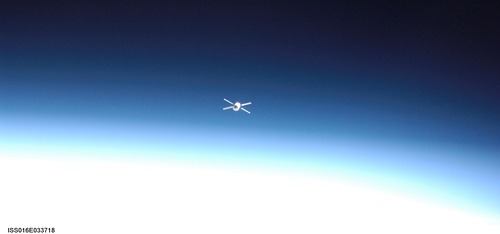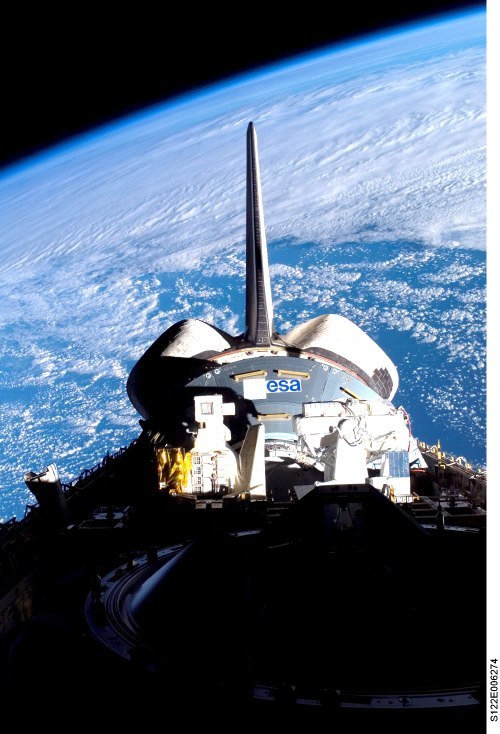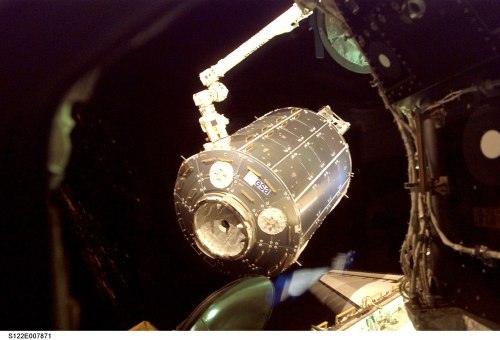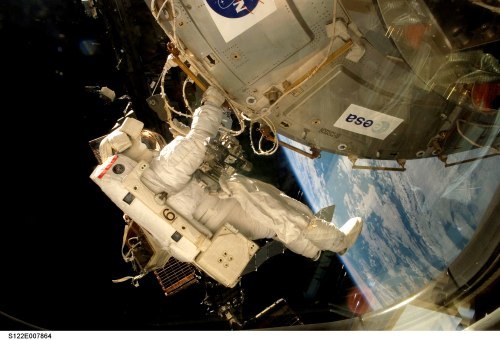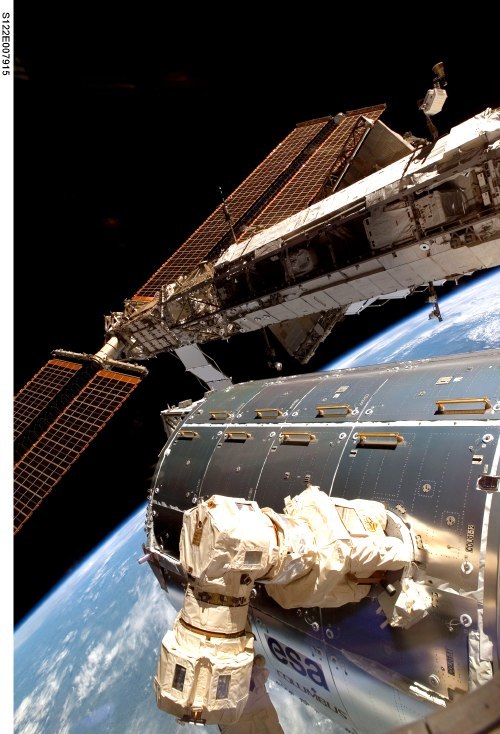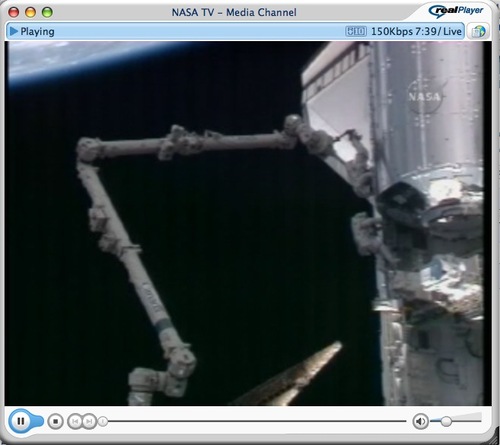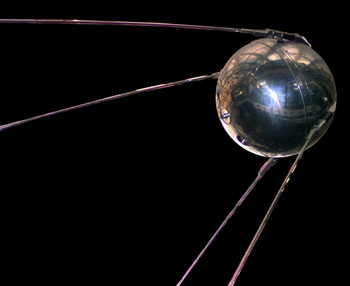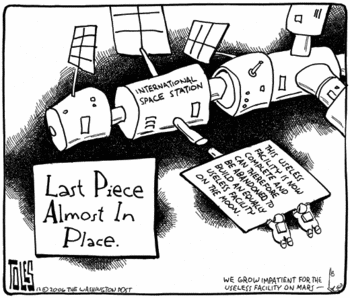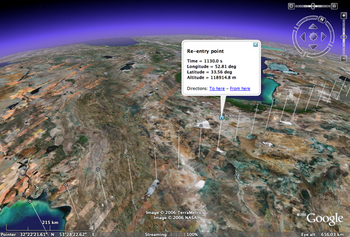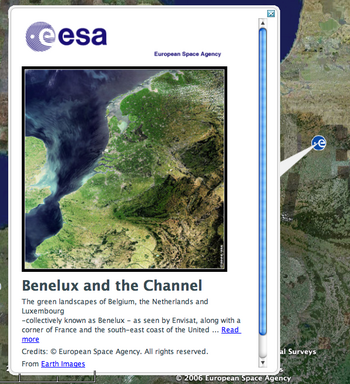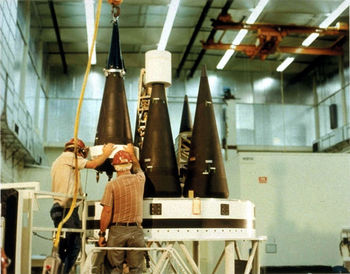This is the ESA (European Space Agency) archive | Back to Main
tobearchived after 6 years
Posted on Monday, September 17, 2012
After exactly 6 years (first post) its time to archive this blog. I've had a great time keeping a trail of my online journeys over these past 6 years and it served me well in my worldly travels, but its time for a new itinerary. I will keep the content up for the Google but I won't be posting here anymore. If you're interested in staying connected, follow me on Twitter @tobedetermined until I find a new home to share my current and future travels.
Operations Centers
Posted on Saturday, August 21, 2010
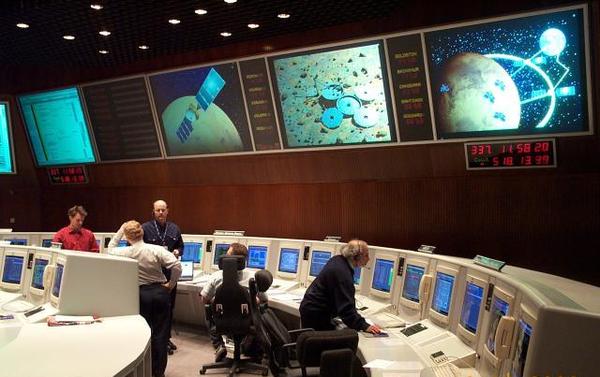
European Space Operations Center (ESA/ESOC)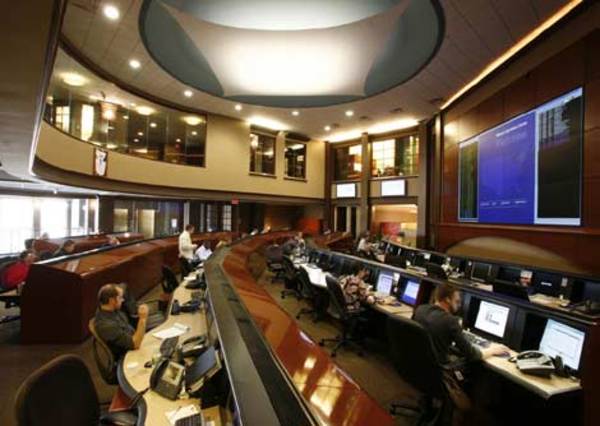
PAETEC Network Operations Center
Sign Of The Times
Posted on Monday, December 1, 2008
Chang'e 1 Lunar Map Released. What a great image! Especially with those Chinese characters above it (the 5th character from the left is the character for the moon according to my American colleague who was born in China). They have even gone through great length to appropriate all large craters with Chinese characters. Click on the image for a high res version (via).
Participatory Impacting the Moon
Posted on Sunday, November 23, 2008
A probe released from Chandryaan-1 impacted the moon last week (more & images). A nice dress rehearsal for the LCROSS mission which is looking for lunar impact next year (LCROSS is developed here at NASA Ames). Didn't see any realtime coverage though. No live spacecraft images coming online as it is heading towards impact...so there is still the 'innovative/surprise factor' up for grabs for LCROSS. Like @MarsPhoenix grabbed it for the twitter platform.
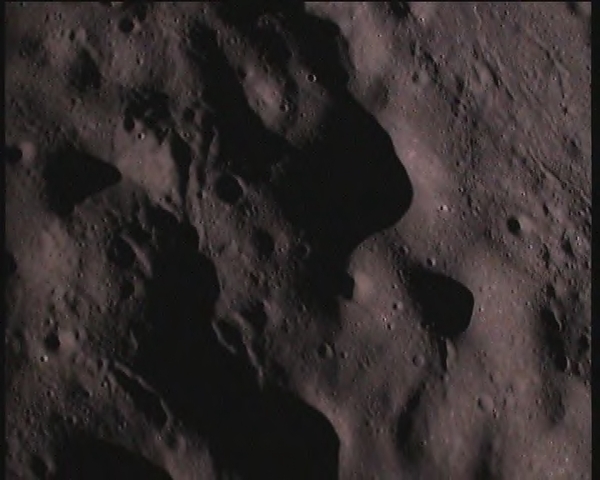
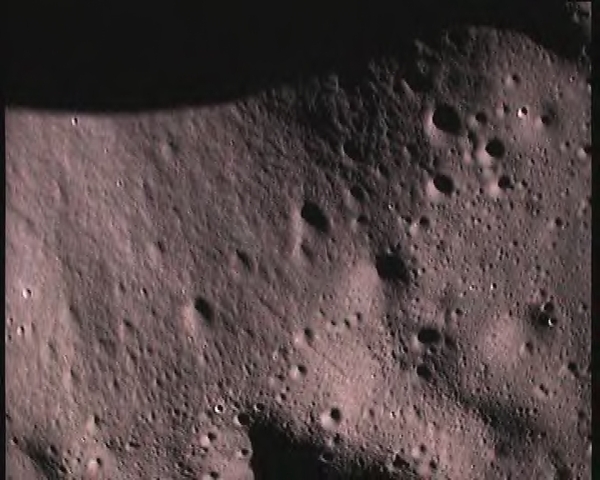
ESA on Youtube
Posted on Monday, November 17, 2008
More at www.youtube.com/esa (via Sebastian Marcu's message on skype)
The Web as Platform...for the Exploration of Outer Space
Posted on Monday, November 3, 2008
Can't wait to see NASA increase government's piece of the cake here (more on the pie chart at O'Reilly Radar and the originating post entitled '1,000 Web API's' over at ProgrammableWeb). I mean, if the New York Times is able to open up their platform (see for example their Open NYT blog and their developer site), shouldn't NASA be able to do the same? There is already a lot of NASA data out there on the web, but its scattered over as many different websites. Bringing everything under one easy-to-use platform (think: developer platforms from the likes of Google, Yahoo, Microsoft, Amazon etc.) would be a great achievement. And it would make perfect sense, given the nature and the amount of data NASA gathers through its sensors (images, videos, temperature readings, what have you...media equals data equals media these days right?). NASA as a service oriented agency providing the sensors and the resulting platform of data for scientists and anybody with an Internet connection to tap into for scientific research and participatory exploration (earlier post). I can't start to think what types of innovation would result from that. The ease of availability of data (for machines) being one of the biggest 'competitive' advantages in the web3.0 [sic] years ahead. Reminds me of a hack on an image I made back in the days of my thesis embedded below. 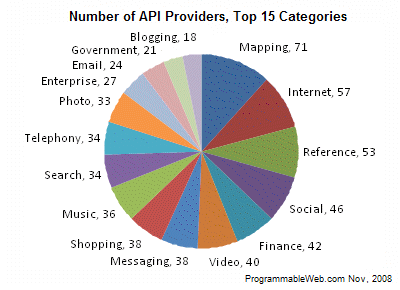
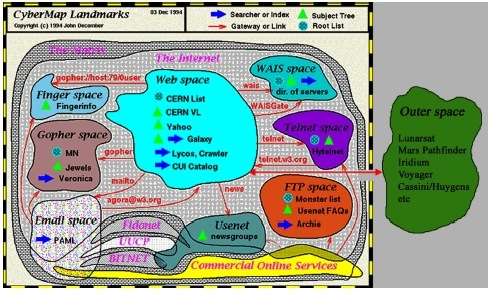
First Images of the Earth from Chyandrayaan-1
Posted on Monday, November 3, 2008
And quite exquisite ones as well (see earlier post). Click the images for full res. More from the Indian Space Research Organisation (ISRO) at this Press Release from last friday 31st October 2008. More on Chyandrayaan-1 at its own website. (all links via)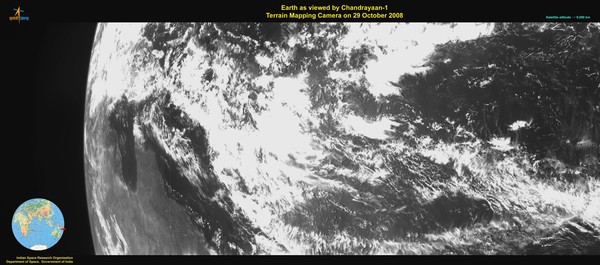
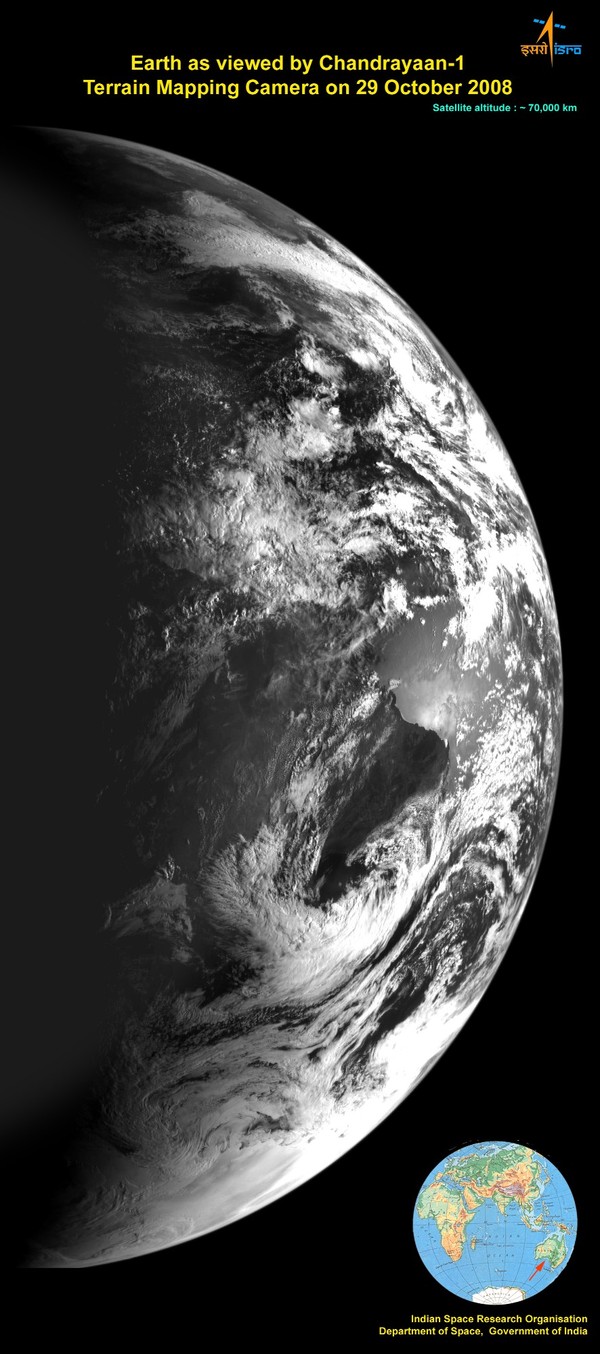
India On Its Way To The Moon
Posted on Tuesday, October 21, 2008
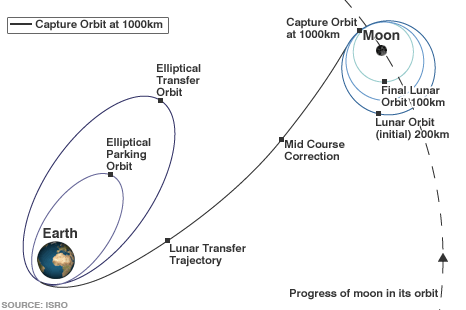
Will be curious to see when the first images from the spacecraft start appearing in cyberspace. I read here that they only switch the cameras on once they arrive in Lunar orbit...seems such a waste to have these valuable 'eyes in space' in hybernation mode while going from the Earth to the Moon. More at BBC.
International Committee on the 'Cultural Utilisation of Space' Launched
Posted on Friday, October 17, 2008
Reblogging Arts Catalyst:
The new IAF (International Astronautical Federation) Technical Activities Committee for the Cultural Utilisation of Space (ITACCUS) was announced during the Less Remote symposium. ITACCUS has been set up to promote and facilitate the innovative utilisation of space by the cultural sectors of society internationally. The term 'utilisation' is used often by the space community. In a cultural context, it may include cultural production, cultural preservation, cultural representation, cultural education and cultural development.The launch speakers were ITACCUS co-chairs Roger Malina, Director, L'Observatoire Astronomique Marseille, and Nicola Triscott, Director of The Arts Catalyst, and committee members Ciro Arevelo, Chairman of the United Nations Commitee on the Peaceful Uses of Outer Space, who welcomed the ITACCUS initiative for the contribution that the cultural sector could make to space and society's engagement with it, Mario Hernandez from UNESCO, who explained the work of UNESCO in using space surveillance systems to monitor world heritage sites, Bernard Foing from the European Space Agency and Spanish astronaut Pedro Duque.
ITACCUS will report on its activities online, and will submit a report annually on cultural utilisation of space to the UN Committee on the Peaceful Uses of Outer Space. It is developing a webspace, which will be linked from its page on the IAF website at www.iafastro.com.
Building The Interface To the Planetary Sensor Web
Posted on Thursday, October 16, 2008
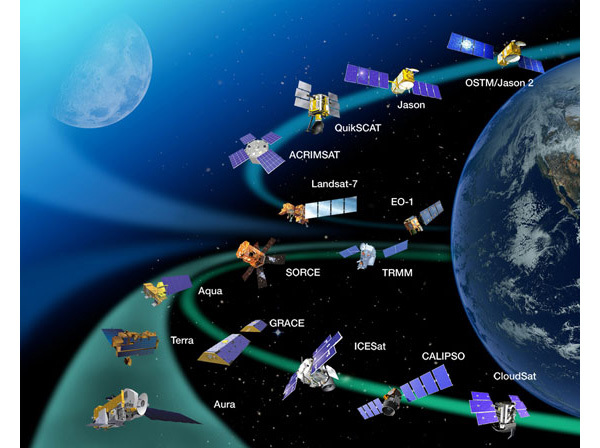
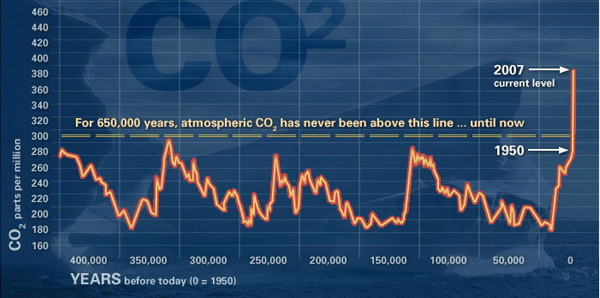
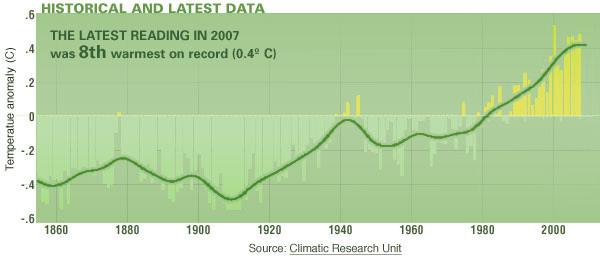
JPL launched it newly designed website today, including a dedicated site on global climate change with the telling subtitle 'NASA's Eyes on the Earth' (CNN has more). In these times of endless stock exchange graphs, stats and scares, its great to see a similar data vis design pattern emerge with the early steps towards a planetary sensor web user interface (if only we could swap the trend in above graphs with the NYSE). Sofar it seems satellite data is not really fed real-time (at least not in an all encompassing & comprehensive way) but I'm sure we'll get there, including open API's for everyone to leverage the sea of space based sensor data about the state of our planet (and beyond). On a related note, O'Reilly just released a Radar report on Where2.0 with a great introduction by Tim O'Reilly.
Fly Me To The Moon
Posted on Sunday, October 12, 2008
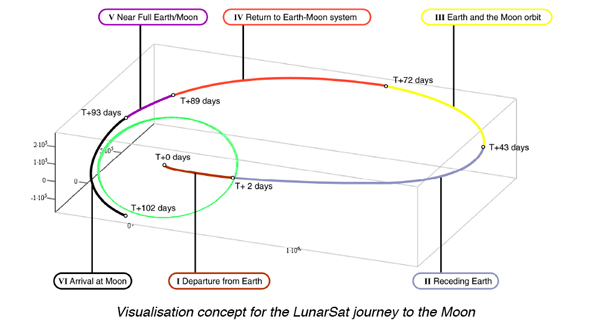
Just finished reading a great book written by Edward Belbruno on his design of advanced trajectories called "Weak Stability Boundary Trajectories". Trajectories that helped save several spacecraft stuck in Low Earth Orbit, like the Japanese Hiten spacecraft. He gives a beautiful description of how a theoretical mathematician enters the space industry (at JPL) and comes up with a highly innovative way to think about trajectory design and gravitational fields. Basically, it comes down to using the gravitational fields of the Earth and Moon to have a "ballistic capture" into Lunar orbit. One of the metaphors he uses is the wave surfer. Be too slow, and the wave passes you by. Be too fast, and the wave won't catch up with you. In Belbruno's case, he is talking about gravitational attraction (not exactly waves [at least, not it his case], but the metaphor still works to explain the idea). Brings back memories of 10 years ago when I was working as part of my thesis on a mission that was planned to take one of these fuel-efficient trajectories to the Moon (image above was my script to use onboard cameras to film the Earth during the 90-day Lunar transfer based on trajectory design by Robin Biesbroek, the green circle is the moon's orbit around the Earth). Beautiful to read how innovation in space exploration happens. And he even manages to bring Vincent van Gogh's Starry Night into his conceptual framework (podcast with Belbruno at The Edge).
Software, The Final Endless Frontier
Posted on Tuesday, October 7, 2008
From a post by Vint Cerf in the series on Google's 10th anniversary:
A box of washing machine soap will become part of a service as Internet-enabled washing machines are managed by Web-based services that can configure and activate your washing machine. Scientific measurements and experimental results will be blogged and automatically entered into common data archives to facilitate the distribution, sharing and reproduction of experimental results. One might even imagine that scientific instruments could generate their own data blogs.I wonder when small sats finally turn into soap boxes. Vint continues:
These are but a few examples of the way in which the Internet will continue to surround and serve us in the future. The flexibility we have seen in the Internet is a consequence of one simple observation: the Internet is essentially a software artifact. As we have learned in the past several decades, software is an endless frontier. There is no limit to what can be programmed. If we can imagine it, there's a good chance it can be programmed. The Internet of the future will be suffused with software, information, data archives, and populated with devices, appliances, and people who are interacting with and through this rich fabric.Read the whole post here.
Artists get involved in defining the Aims and Missions of a Space Agency
Posted on Wednesday, October 1, 2008
The IAC is on this week. Too bad I am missing it. Would they possibly think of recording the sessions and putting them online like Techcrunch did with their Techcrunch50?. There's good stuff happening, like the side conference Less Remote, which includes discussions on Cultural Utilisation of Space as blogged by Nicola Triscott at the Arts Catalyst blog:
Yesterday evening, we had some excellent examples presented of 'cultural utilisation' of space, notably Marko Peljhan reported on the development of the Slovenian Space Agency, with artists contributing directly to the formulation of its aims and missions.This morning, we have had cracking presentations from Andrew Stones, Iain Bolton, Frank Pietronigro and Hans-Arthur Marsiske. Artist Andrew Stones challenged any notion of ‘objectivity’ in deciding space priorities and reflected on how space is influenced by the cultural imaginary and by dominant and privileged interests. Iain Bolton examined the influence of political culture in the area of national space policy, particularly in the US which differs from the space policies of other nations because of its explicit goal of remaining ‘the leader’ in space exploration. Frank Pietronigro joined us by video link from San Francisco to propose the potential contribution of queer culture to the evolution of future space exploration. Hans-Arthur Marsiske reflected on the darker aspects of the legacy of Christopher Columbus (after whom the new ESA ISS laboratory is named) and what this might imply for future encounters with alien cultures.
Hello World
Posted on Tuesday, September 30, 2008
I kinda missed the excitement of the Chinese EVA the other day (NYT).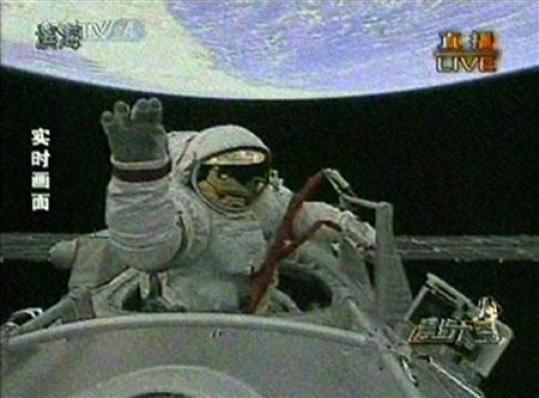
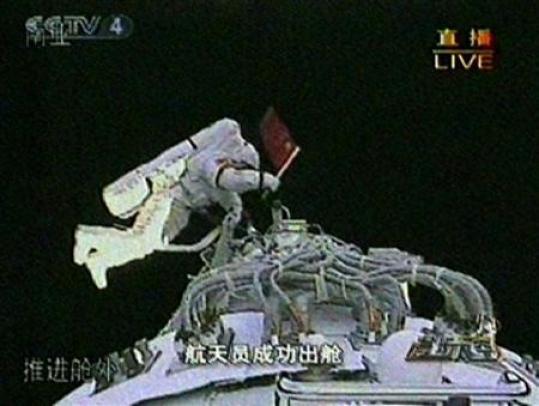

(via & via)
10 Bucks Well Spend
Posted on Wednesday, September 24, 2008
Following on from yesterday's syndication of Tim O'Reilly's keynote at the NY Web2.0, I just finished watching the documentary he has been pointing out on several of his keynotes: A Crude Awakening: The Oil Crash. Buy it on itunes from their website and have a peak into the future of post cheap oil society. Quite informative...
Tim O'Reilly's Call to Action
Posted on Tuesday, September 23, 2008
And it ain't throwing sheeps. From last week's Web 2.0 Expo in New York entitled "Web Meets World".
(via)
tobedetermined.org Extended Credo
Posted on Monday, September 1, 2008
Update: A post over at O'Reilly Radar by Nat Torkington reminds me of another quote I've used in the earlier days of this blog. It's a (famous) quote from William Gibson: The future is here, its just not evenly distributed yet. In his post, Nat refers to another quote from Gibson that brings the overarching point home:
One of the things our grandchildren will find quaintest about us is that we distinguish the digital from the real, the virtual from the real. In the future, that will become literally impossible. The distinction between cyberspace and that which isn't cyberspace is going to be unimaginable. When I wrote Neuromancer in 1984, cyberspace already existed for some people, but they didn't spend all their time there. So cyberspace was there, and we were here. Now cyberspace is here for a lot of us, and there has become any state of relative nonconnectivity. There is where they don't have Wi-Fi.
Having a 3-day weekend does have its benefits (like in: having an extra evening behind your computer?). Think I just stumbled upon something like an extended credo for this blog (beyond tobedetermined.org: A blog about outer space, cyberspace, their common future and all that is leading up to it... ). I started gathering some quotes that resonated with me over the years and ended up with this list (read from top to bottom, in that order):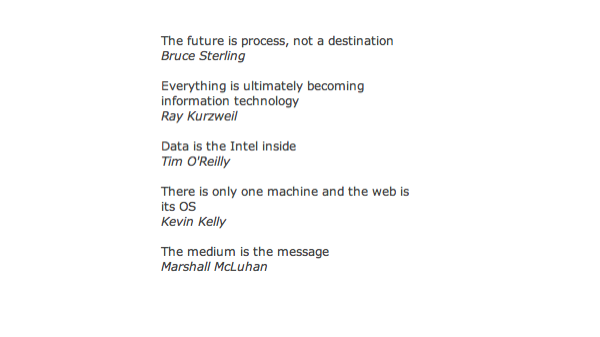
I am sure there are more out there that would fit this list, so if you have any suggestions pls let me know.
ESA runs a webcam...around Mars
Posted on Sunday, August 31, 2008
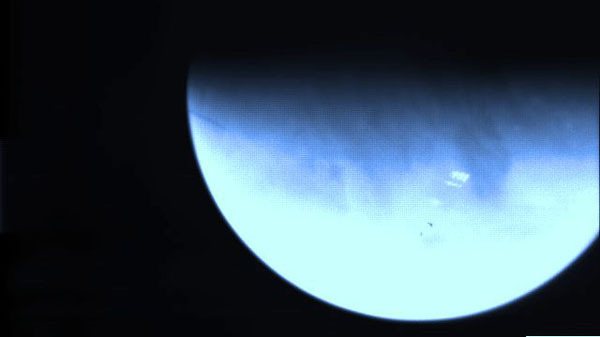
And they invite the public to participate in processing the images. See for more @ ESA's VMC website. Nice job by VMC team coordinator Thomas Ormston, Mars Express Spacecraft Operations Engineer.
The Economist on Space
Posted on Thursday, August 21, 2008
Since reading the excellent 'Nasa at 50' in the Economist earlier this summer, I am considering them a valuable voice in the (online) space debate, so I am glad to see 3 new space articles in the 21st August edition (via):
On Rocks and Clouds
Posted on Thursday, August 21, 2008
How to syndicate SOHO's realtime images?
Posted on Monday, August 11, 2008
Redesigning my blog's look & feel, I wonder why I can't embed this realtime stream of SOHO images into my blog? Why is there no readily available embed option like the one below for the Colbert Report? Serious, how difficult would that be to implement? Btw, if you wonder what the CCD bakeout overlay means, this is from their website:
And what about EIT's CCD bakeout?
Over time, many types of CCDs (Charge-Coupled Devices) used to detect EUV radiation are degraded by contamination of heavy ions from cosmic/solar particle radiation (interfering with the doping of the chip), deposits and polymerisation of deposits on the surface and, finally, trapped charges (again interfering with the doping of the substrate). These forms of degradation reduce the sensitivity of the detector. Fortunately, by heating the CCD over an extended time period, some of these effects can be reduced. Heating the CCD to improve its performance is called "baking out" the CCD. Since EIT would be unable to do "business as usual" during keyholes, they schedule their bakeouts during periods when data loss is inevitable.
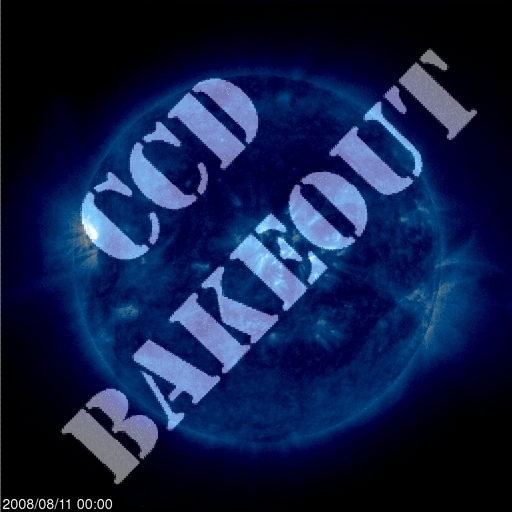
Summer 2008
Posted on Friday, August 1, 2008
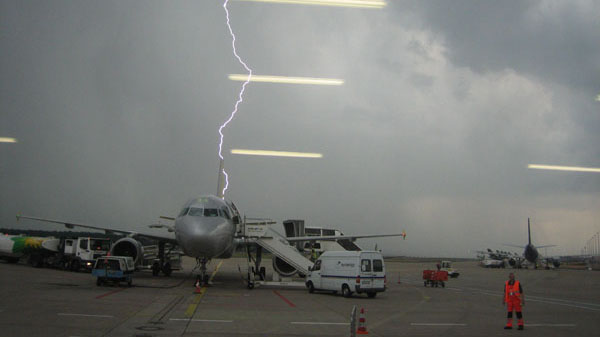
Back from a week of Internetless holiday on the island of Korcula (above photo was at Koln airport just before we were told we could board the plane ;-). Catching up here are a few relevant tidbits:
- The Economist's commentary on NASA's 50th anniversary provides a sharp dissection of NASA's past, present and future. Its the most sensible story on space and NASA I've read in a long while. As always, the comments are worth reading too, if only to see how space proponents bring their arguments into gear to downplay the article's 'hammer on the nail' analysis
- Sanfran article of the week about twitter, relationships, and the bay area working spirit
- Missed OSCON, but here's a 37min intro and Tim Oreilly's comments
- A great discovery: this TED video by kevin kelly. I especially like his McLuhan Reversal analogy. Have to watch it again.
The Stone Age Didn't End Because of a Shortage of Stones
Posted on Sunday, July 20, 2008
Bruce Sterling comments inline on this passionate call by Al Gore for the US to become carbon fuel independent in 10 years.
Time to put some solar panels on my roof here in Palo Alto. Or wait, wasn't I first gonna spend 2 weeks flying around Europe for my holiday, buy the iPhone and upgrade my car (from what I hear SUV's come cheap these days).
Could this be the "Moonrace" of the 21st century?
We need you. And we need you now. We're committed to changing not just light bulbs, but laws. And laws will only change with leadership. On July 16, 1969, the United States of America was finally ready to meet President Kennedy's challenge of landing Americans on the moon. I will never forget standing beside my father a few miles from the launch site, waiting for the giant Saturn 5 rocket to lift Apollo 11 into the sky. I was a young man, 21 years old, who had graduated from college a month before and was enlisting in the United States Army three weeks later.I will never forget the inspiration of those minutes. The power and the vibration of the giant rocket's engines shook my entire body. As I watched the rocket rise, slowly at first and then with great speed, the sound was deafening. We craned our necks to follow its path until we were looking straight up into the air. And then four days later, I watched along with hundreds of millions of others around the world as Neil Armstrong took one small step to the surface of the moon and changed the history of the human race.
We must now lift our nation to reach another goal that will change history. Our entire civilization depends upon us now embarking on a new journey of exploration and discovery. Our success depends on our willingness as a people to undertake this journey and to complete it within 10 years. Once again, we have an opportunity to take a giant leap for humankind.
Yup
Posted on Thursday, July 17, 2008
Wading through +2k unread posts in my list of RSS feeds (Bruce Sterling's Beyond the Beyond).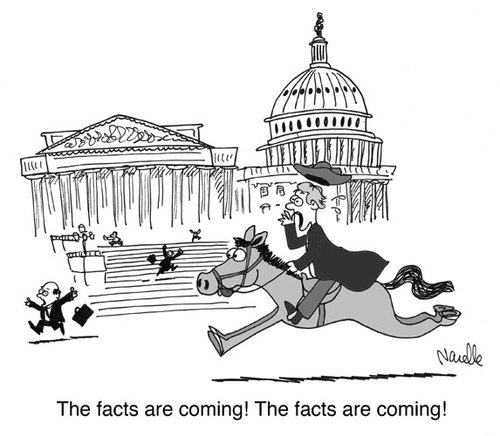
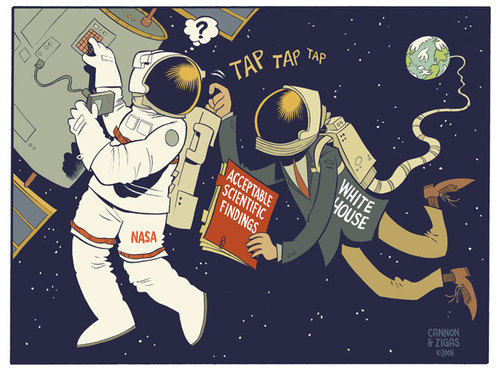
Its You They're After
Posted on Saturday, July 12, 2008
The best analysis on Google's Lively I've read sofar comes from RealityPrime: Its not so much about giving people a nice virtual world to play with, its providing a new interface to harvest new and previously untapped user behaviour. Which reminds me of an excellent article I was send the other day on the near future of advertising, a must-read.
Yes, But Is It Art?
Posted on Saturday, July 12, 2008
Or Space Aaaarrrrttt, as a Dutch Space Agency collegue would call it back in the days... (personally I wouldn't directly associate this with art, but that's another story. Its an excellent video though!)
Super Sprayer - video powered by Metacafe
Robots Get Better Every Day
Posted on Wednesday, July 9, 2008
A couple of quotes from an article in the Washington Post entitled 'U.S. Finds It's Getting Crowded Out There' (via):
The cost of manned space exploration, which requires expensive measures to sustain and protect astronauts in the cold emptiness of space, is a particular target."The manned space program served a purpose during the Apollo times, but it just doesn't anymore," says Robert Parks, a University of Maryland physics professor who writes about NASA and space. The reason: "Human beings haven't changed much in 160,000 years," he said, "but robots get better by the day."
Another one:
In its assessment, Futron listed the most significant U.S. space weakness as "limited public interest in space activity."
Hmm, it looks like us humans are a real show stopper when it comes to pushing the borders of reality further into outer space. Perhaps we should consider targeting robots instead of humans with the US civil space PR machine. Once they are on equal par with us, they'll probably be much more enthused and equipped to go into outer space. And after all, our race already had its 15 minutes of fame wouldn't u say? An add campaign targeted at robots...hmm...: "Space, The Final Webservice"
NASA Celebrates 50 Years of Exploration This Year
Posted on Monday, July 7, 2008
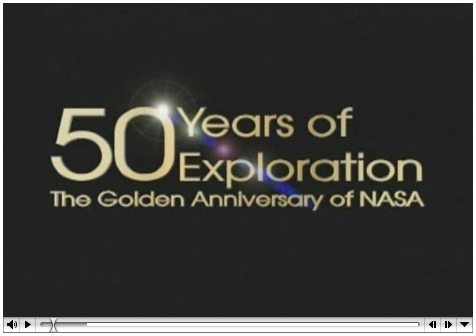
Get started with above video of highlights (btw, where is my embedabble NASA videoplayer?). The official celebration happens around October if I am not mistaken, but according to Wikipedia NASA was established Jul 29th 1958 so we're getting close. Much more on the upcoming celebrations at this NASA 50th Anniversary website.
Sarkozy's Whirlwind Extends Into Outer Space
Posted on Tuesday, July 1, 2008
Committee For The Cultural Use of Space
Posted on Monday, June 16, 2008
Well, seems our efforts over the years are paying off in an interesting way. Nicola Triscott recently presented at UNCOPUOS and announced the setup of a new Committee at the International Astronautical Federation: the IAF Technical Activities Committee for the Cultural Utilization of Space (ITACCUS):
The IAF Technical Activities Committee for the Cultural Utilization of Space (ITACCUS) seeks to:
Promote and Facilitate the innovative utilization of space and ground segments of space projects and systems, and space applications systems by Professionals and Organizations in the Cultural Sectors of Society Internationally
Easily The Best Live TV Channel Around
Posted on Thursday, June 5, 2008
Now how do I go about getting an RSS or email message (or better, a live TV player popping up) whenever there is a live EVA going on on NASATV? And what about having the spacewalks made available on-demand? Would I be able to switch cameras myself perhaps? Lots of opportunities to make the NASATV service even better.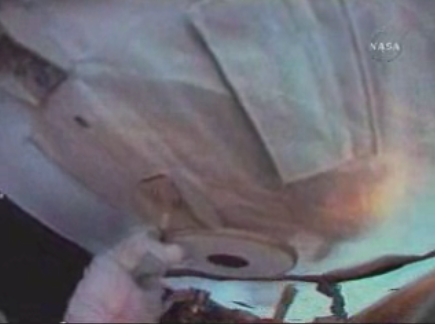
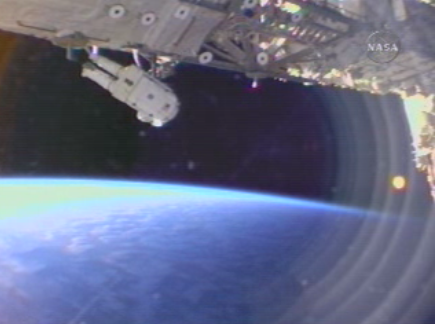
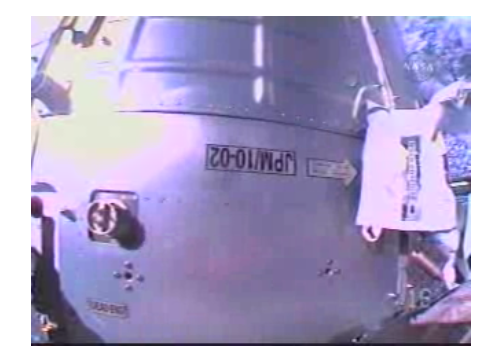
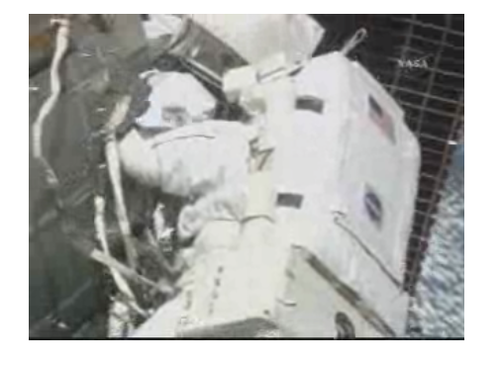
Mike Griffin at Googleplex (June 2007)
Posted on Saturday, May 17, 2008
Finally got a chance to see the recording of Mike Griffin's talk at the Googleplex last year. Informative talk. $55 a year per US citizen goes to NASA, out of an average 8k$ yearly tax bill. That's actually more than I'd expected.
World Wide Telescope Released
Posted on Thursday, May 15, 2008
Yep, its here (given the page design you'd mistake it for a Mac site just for a second). Ever since I upgraded to Mac OSX 10.5 (aka Leopard) last week my Parallels XP virtual machine is in a permanent state of reboot so I haven't had a personal interaction with WWT yet, but from the reviews of it over at OgleEarth and The Earth Is Square, it seems to be a pretty nifty application.
Can't wait to get my NASA Macbook Pro exchanged for a proper PC...
Some views to enjoy (until I get back to posting regularly)
Posted on Tuesday, May 6, 2008
What do you want NASA2.0 to be?
Posted on Wednesday, April 23, 2008
I am here in San Francisco at the Web2.0 Expo in Moscone West, just kicking off with the highly informative 'Building Next Generation Web2.0 Applications' workshop by Dion Hinchcliffe (See some of his slides below).
One of the points he made very clear is the value of data. Data is the new Intel inside as Tim O'Reilly so succinctly proclaimed in his seminal 2005 paper on 'What is web2.0'. The web is a platform. For NASA, its a platform for space exploration. Getting web2.0-ified seems not so much a question of how to gather a data class valuable to its users (after all, who doesn't like images like these, or looking through the eyes of our rovers on Mars, as seen from above), or getting everybody to become rocket scientists (although...mmm...;-), but more the other way around: how to leverage its vast data resources (after all, what are satellites other than data gathering devices) to get the public more engaged in NASA's mission and activities. Space is cool, and you know it. Its just too far away from our daily lives on the web. Give me space exploration, right here, right now, and we'll give you our database of space exploration intentions.
Building an open platform on the web where NASA can easily share all the great data it gathers is the anwser. Be there as the images pour in. Be there as the exploration takes place. NASA2.0 is all about getting NASA's data more available, usable and shareble on the web. Where possible in (near) real time please.
Which reminds me of this post over at the Institute Of The Future about post-scientific society. Well worth the read!
American innovators — with their world-class strengths in product design, marketing and finance — may have a historic opportunity to convert the scientific know-how from abroad into market gains and profits. Mr. Hill views the transition to “the postscientific society” as an unrecognized bonus for American creators of new products and services.And they just released today a new initiative called X2 about the future of science and technology.
A post-scientific society will have several key characteristics, the most important of which is that innovation leading to wealth generation and productivity growth will be based principally not on world leadership in fundamental research in the natural sciences and engineering, but on world-leading mastery of the creative powers of, and the basic sciences of, individual human beings, their societies, and their cultures.
Just as the post-industrial society continues to require the products of agriculture and manufacturing for its effective functioning, so too will the post-scientific society continue to require the results of advanced scientific and engineering research. Nevertheless, the leading edge of innovation in the post-scientific society, whether for business, industrial, consumer, or public purposes, will move from the workshop, the laboratory, and the office to the studio, the think tank, the atelier, and cyberspace.
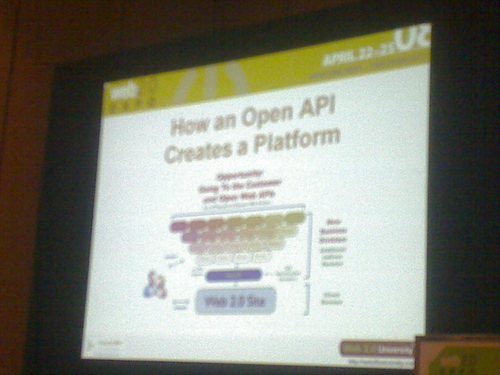
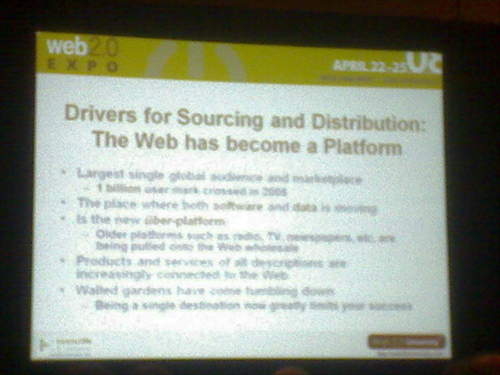
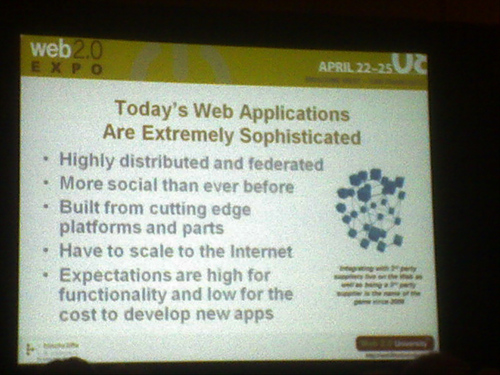
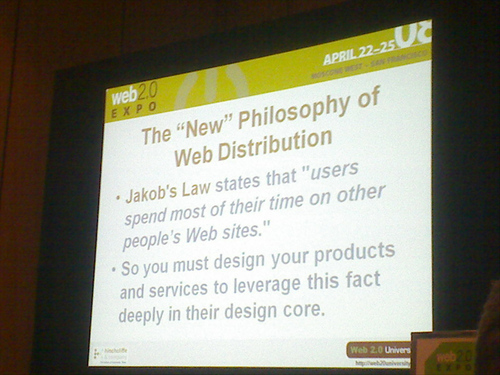
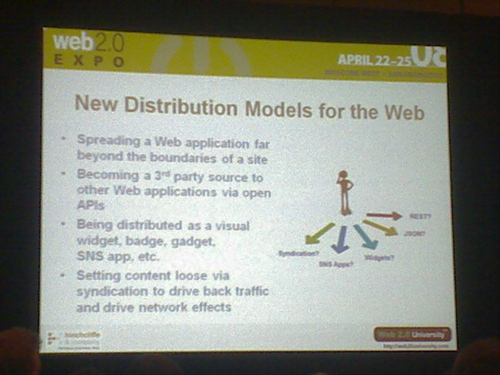
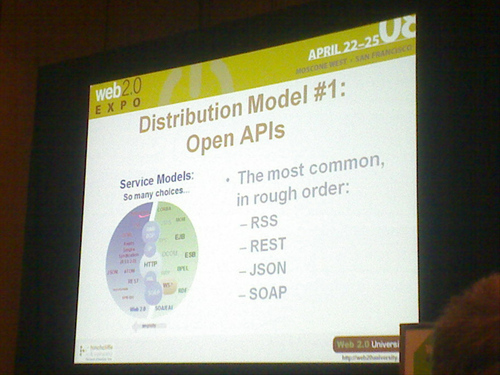
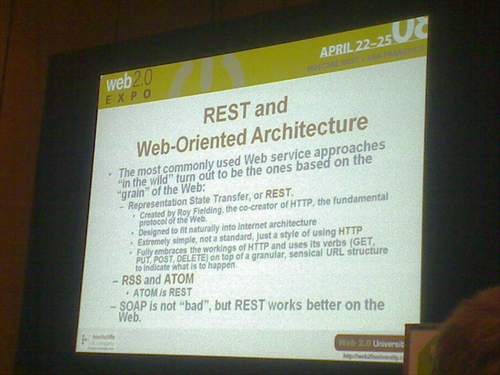
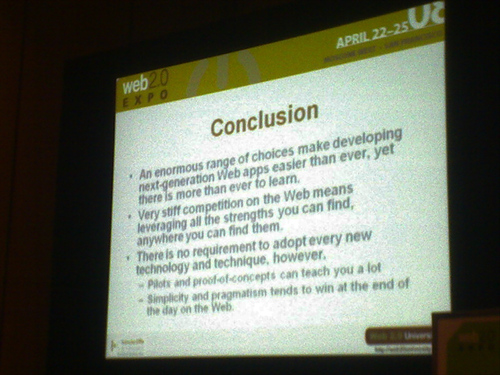
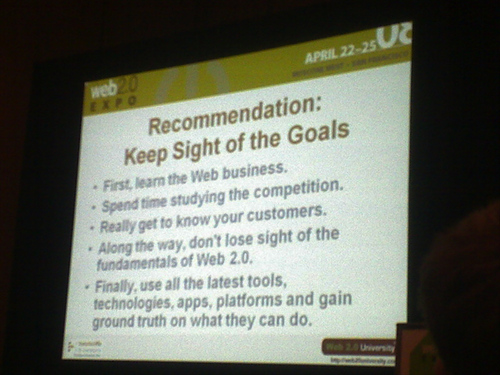
A.C. Clarke died today
Posted on Wednesday, March 19, 2008
...(bbc news)
update: Google's Chief Evangelist Vint Cerf also says goodbye to Clarke in this post. It includes a nice video of Clarke recorded end of last year.
Time to get on the bus
Posted on Wednesday, February 27, 2008
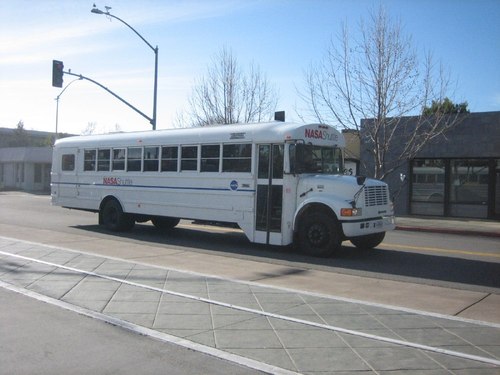
Ok, so its time to give a brief update on my (physical) whereabouts. Since last thursday I moved from Amsterdam to Mountain View, Silicon Valley to work with Chris Kemp and his collegues over at NASA Ames starting next monday March 3rd. Weehoo! Finally, a long held dream is coming true, taking part in the upcoming merger of outer space and cyberspace, right at the heart of where all things space are happening. Couldn't be better!
As for this blog, looks like I will be using it from now on to give you a personal insight in my personal and professional experiences here in the Valley. Sofar, these include a great arrival and first few days enjoying the Bay Area rainy season (yes, it can rain here...), a visit to the Vertical Motion Simulator on NASA Ames premises last friday (for photos have a look at this flickr album), my first NASA vrimibo with Ames director Pete Worden, Chris Kemp and several of my upcoming collegues (vrimibo is short for 'vrijdag middag borrel', Dutch for the traditional friday afternoon drink), a first counter-clockwise drive around the Bay Area, and writing off the first item on my wishlist of things-to-do-when-I-get-to-the-Bay-Area: attending a Long Now seminar in San Francisco (on which more in a follow-up post).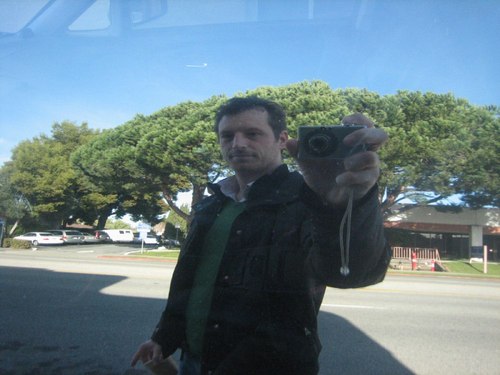
Columbus installed on ISS
Posted on Tuesday, February 12, 2008
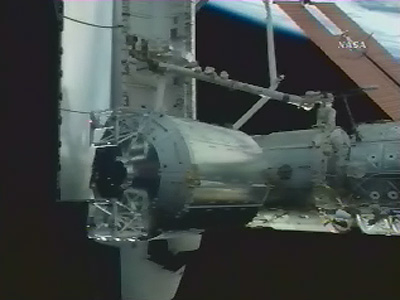
Strange...I thought it would be installed on the other side. This seems to be the place of the Japanese module KIBO. Well, at least the Shuttle docked at the right place. More at ESA.
SpaceCollective.org
Posted on Monday, February 11, 2008

Techno utopianism lives on. Its been a while since we heard from Kurzweil, but I recently came across this website called spacecollective.org, set up by former country man Rene Daalder. From a first peek, it seems to be along the lines of what this blog is all about, that is, evolution of technology and the role of space in this evolution. Spacecollective.org seems to have a healthy critical stance, definitely worth a visit. I like the fact it originates from someone in the film industry, one of the main story telling industries out there and a long time passion of mine. Like the Peppers used to sing:
Space may be the final frontier
But it's made in a Hollywood basement.
Immersive Video
Posted on Sunday, February 10, 2008
Via OgleEarth, 360 degrees immersive video delivered to you through the Internet. Impressive. And shareable, like the ones here below (hint: drag the arrow inside the videoscreen).
ISS from the ground (June 2007)
Posted on Friday, February 8, 2008
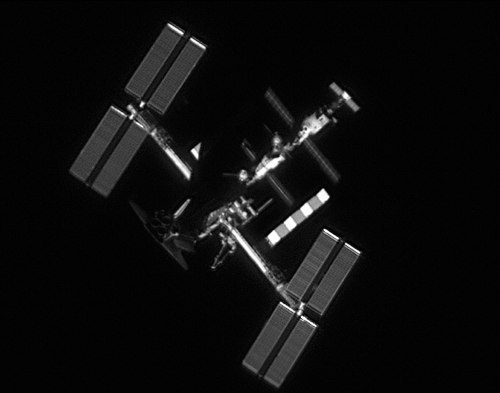
This images gives an idea of what it will look from the ground when the shuttle docks to deliver the Columbus module to the International Space Station in the days ahead. Not sure if the shuttle will dock at the front port btw cause that's where Columbus is supposed to go. (via ESA)
Columbus is in orbit
Posted on Thursday, February 7, 2008
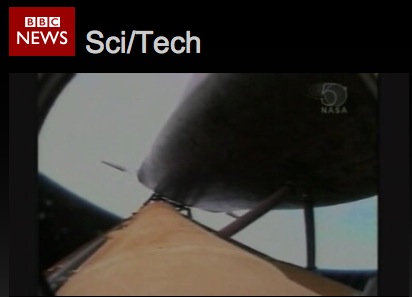
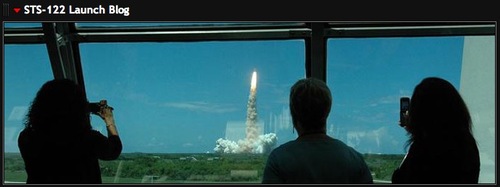
Congratulations to everybody involved!
More at:
NASA STS-122 blog
BBC news (10 min video)
The Medium is the Mind
Posted on Saturday, January 19, 2008
Another good reason why to read below book, the following quote comes from the author's blog:
"The medium is the mind," I write toward the end of The Big Switch, arguing, as others have before, that the tools we use to gather, store, and analyze information inevitably exert a strong influence over the way we think. As the internet becomes our universal medium - what the director of the Annenberg Center for the Digital Future terms "a comprehensive tool that Americans are using to touch the world" - its technical characteristics also begin to shape, slowly but inexorably, the workings of our memory and our other cognitive processes.
There goes another space based solution
Posted on Thursday, January 17, 2008
Just watching the keynote by SJ. As could be expected, there turns out to be a good reason why the iPhone doesn't carry a GPS receiver. There is a terrestrial way to get your position with less battery expenditure. Its Skyhook Wireless, they even call it WPS (Wi-Fi Positioning System). Combined with Google's triangulation of cellular network antenna's, the positioning is apparently considered to be accurate enough. There goes the market for Galileo. Reminds me of Iridium and the promises of cell phones by satellite, which was totally swepted away due to the proliferation of terrestrial networks.
Where are the Indies again?
Posted on Monday, December 31, 2007
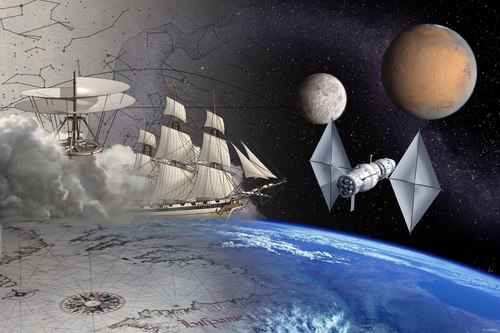
Reading Professor Worner's comments on the 100 years anniversary of German Aerospace on SpaceDaily I suddenly recognise one argument which finally makes some sense to me when it comes to the often used comparison of Columbus' travels to todays space exploration. Columbus set out to find a new route to the Indies (mainly for commercial purposes!), but ended up in America:
Other boundaries are invisible. They are the boundaries of our knowledge. We do not know yet, which discoveries our research with Columbus will bring us. But we do know for certain that we will make new discoveries. Perhaps we may think that we are sailing to India, while we actually end up discovering America...Perhaps this is an interesting entry point when it comes to comparing todays space exploration endeavours with that of Columbus. We have always projected our stories onto the heavens (for a good intro, see the first part of this movie) so I wonder what will be the unexpected outcome(s) of space exploration in the decades to come? Any thoughts? (btw, the image above comes from the AURORA website of the European Space Agency)
DinnerTV: Galileo
Posted on Monday, December 10, 2007
Belgeoblog links to an informative Belgian documentary about the Galileo project and its political and technological challenges. In a mix of Dutch, French, English and US English spoken languages and brought to you in 24 style. Well worth to watch!
Shuttle launch in GE
Posted on Saturday, December 8, 2007
STK's AGI released a visualisation of the imminent shuttle launch to the ISS (via GEB)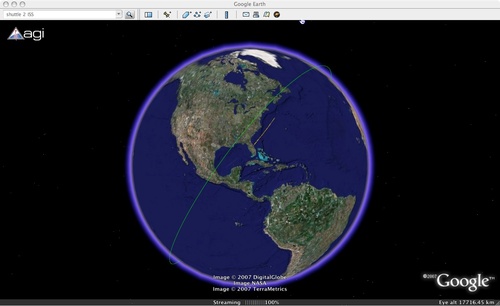
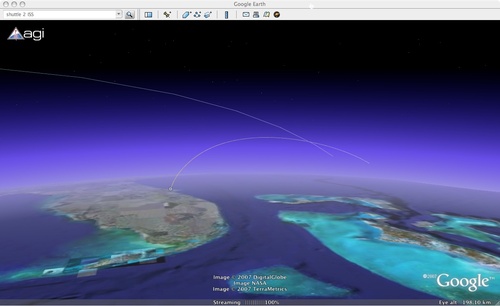
ESA director vacancies
Posted on Thursday, December 6, 2007
Via Fabio comes the news of 5(!) new job vacancies for the post of Director (that's just below the Director General) at the European Space Agency. Take your pick ;-)
Rosetta looks at the Earth
Posted on Tuesday, November 20, 2007
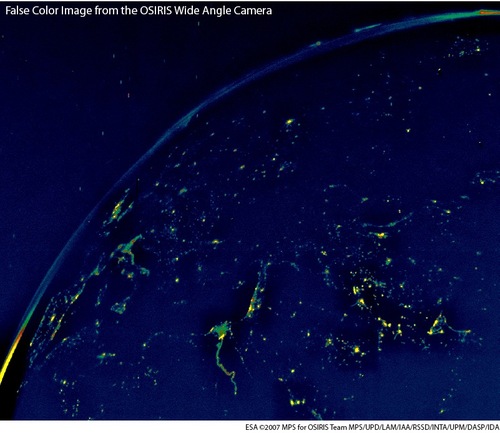
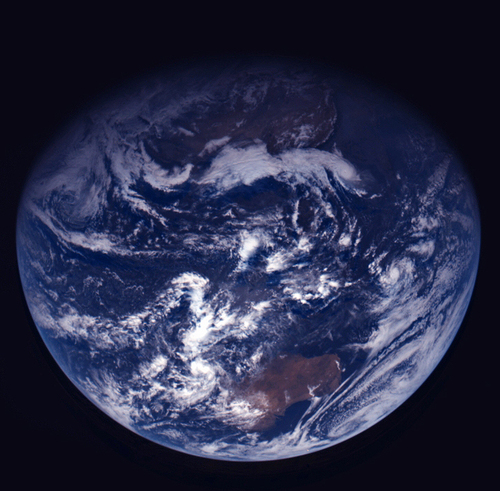
The first one is an oblique look at Europe with the Nile delta and Israel in the middle of the image. More about these images at ESA.
Space Explo's Value Propositions
Posted on Monday, November 19, 2007
The Register today writes under the title 'Americans clueless on NASA budgets' :
A recent survey, carried out on behalf of The Space Review, has revealed that the average American believes a quarter of the country's public purse goes towards funding NASA.Unfortunately, The Register gets its facts wrong because the survey was never conducted on behalf of The Space Review but merely written about on The Space Review, which happens to be one of the more interesting space blogs to read out there (together with NASA Watch and spacecynics). Going to the original article quoted above, I find 2 great articles on space exploration, relevance and customer value: Part 1 and Part 2. On the spot! It's a relief to read this as it provides a pretty clear cut picture of space exploration and its place in modern day consumer market thinking:
The survey found that most people reported the belief that NASA is almost as well funded as the military. The Department of Defense does receive roughly 21 per cent of the nation's wonga, but most people overestimated this by a further 12 per cent.In reality, NASA gets something like 0.6 per cent of the natonal budget, a fact which researchers report came as a surprise to those being surveyed. According to The Space Review, one participant replied "No wonder we haven’t gone anywhere!".
The survey formed part of a larger analysis of the costs and benefits of having a publically funded space agency. The writers argue that people have scant knowledge of what NASA actually does. Combined with the huge overestimates of the cost of running NASA, it is not surprising that people often regard it as being poor value for money.
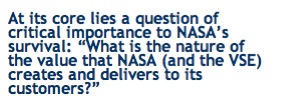 .
.
Some thoughts following the Space Explo Conference
Posted on Tuesday, November 13, 2007
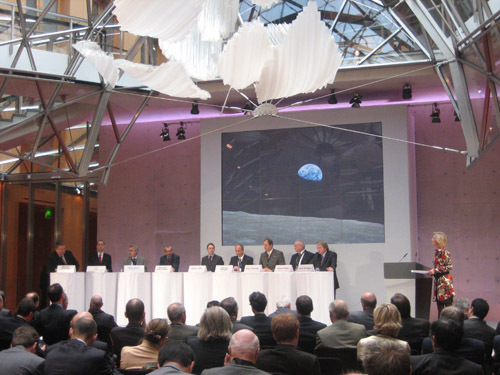
Update 15 November: I was told at ESTEC today that videos of the conference will indeed be posted lateron once they are finished with the editing.
I went down to Berlin last week to attend an ESA/DLR conference on the future of Space Explo in Europe. A lot was said, presentations were abundant, and the various stakeholders (in particular politicians, space agencies and industry) gave their view on what Europe should be doing in the years to come on space explo. One of the main outcomes of the conference: the European Space Exploration Strategy has been reworded to the European Space Exploration Programme...he, these things can make a world of difference.
Interestingly enough, the M word, as in Moon, is still hard to pronounce by Mr. Sacotte of ESA as the agency has decided it should focus on the Mars. Seems this is a position they took when NASA was fully engaged with Mars exploration back in the early 00's. However, since then, Bush has redirected the NASA strategy towards bringing humans back to the Moon, and it seems hard for ESA to bring its strategy in line with this redirected global explo agenda. So while all countries pulling any weight in the space explo arena, China, India, the US of A, all have their focus on the Moon, Europe seems to be struggling with their lock-in in thinking about the Mars (the English pronounceation of native German speakers brings some funny mashups, as in talking about the Moon vs talking about the Mars). Germany however isn't fooled and recently announced its plans to develop a national lunar probe, something that was re-iterated at the conference by DLR Director of Space Programmes Mr. Dollinger.
There was a point where I got intruiged about the way they talked about the usual dichotomy between robotic (unmanned) and human exploration. Usually, this debate quickly ends in the trenches where the proponent on either side digs him/herself in with the usual arguments, leading nowhere. A first smart remark in this context I remember from US astronaut Jeffry Hoffman (of Hubble repair fame) who made the comment at ISU about the complementariness of humans and robots (I don't remember his complete argument, but given that he went up to space to repair a robotic explorer kind of paints the picture of his understanding). At this conference, there was the same question on the table. On itself an interesting question and space is one of the few places where this comes up all the time due to the shear costs involved in sending humans up. This time, it felt as if the conference participants, all human to my knowledge, where there to make a strong case for human exploration...because all of us attending were human. It seemed there was a stance in the robotic/human debate about us against them. Its the first time I interpreteted the debate this way, but it makes for an interesting perspective on where things might be going. The drive to explore doesn't change, its the means that are under scrutiny. Another argument in this context, one that I made together with an ISU collegue last year at a presentation was the following: the most efficient space suit is one without a human inside.
Another important topic which seemed to come up every 5 minutes during the conference was the need for communication of why Europe needs to take part in this global exploration agenda. Well, I guess its true then. The 'Artist as Space Explorer' space & the arts exhibition was nice in that respect but I had a strong deja vu of some 7 years ago when I was involved in a similar type of set up for ESA and the exhibition was mainly used as decoration around the bar with free champagne. Not that different here. Still, it appears there is a little seed taking root at ESA. Hope they'll let it grow...
If this were the web2.0 Summit held in San Francisco last month, the presentation videos would have been online by now. But this is a meeting of much less importance so no videos yet (space exploration...wasn't that something with Apollo?). I really hope they put some videos of the conference online, but given ESA's track record of keeping the walls high and dry, I have my doubts. I'll certainly address it when I get to ESTEC this week. Also in terms of putting the presentations online. If you're interested to put some faces to names, have a look at the flickr photoset I uploaded with the main talking heads. Below pictures were from a presentation by astrophysicist Hans-Joachim Blome about the Cultural Dimension of Human Spaceflight and Exploration. He managed to stay out of the usual paths and gave a glimpse at exploration from a scientific evolutionary point of view. I hope to receive his presentation later this week so I can post it here. 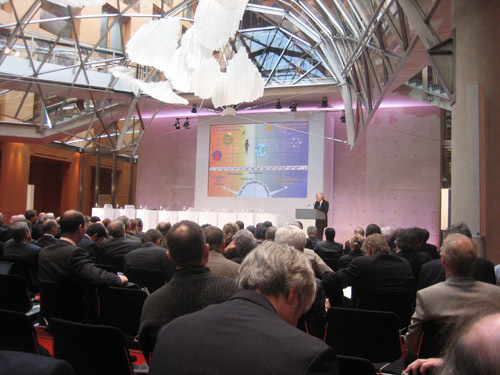
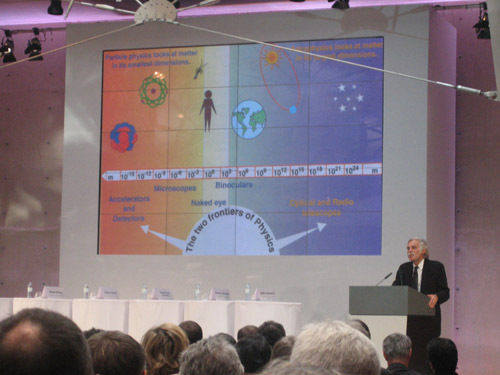
Its Getting Pretty Big Out There..and Beautiful...
Posted on Tuesday, November 6, 2007
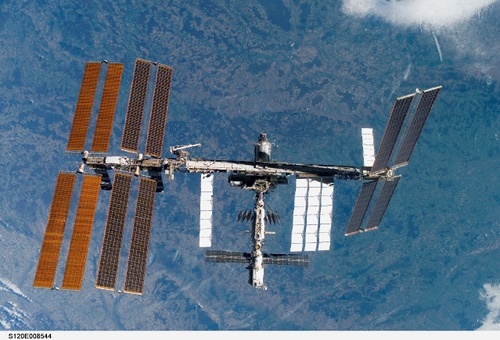
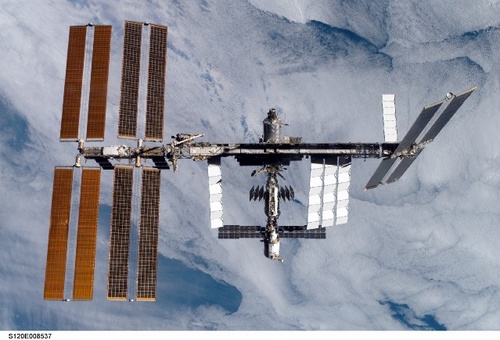
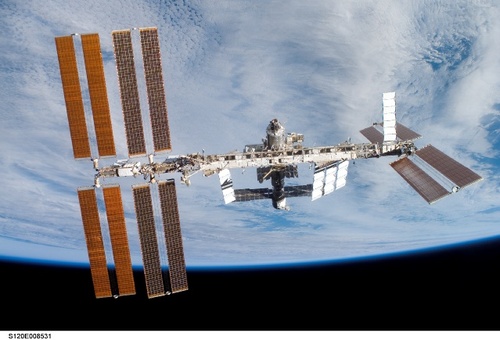
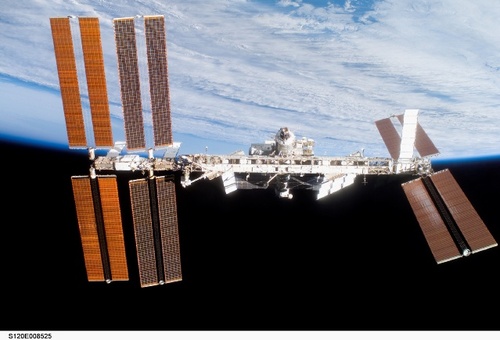
(via NASA Watch)
Some news from Zurich
Posted on Monday, October 29, 2007
A presentation I was pointed to: Web2.0 thoughts from Rolf Skyberg, disruptive innovator at eBay.
ESA is taking a leap with this Space & Art exhibition highlighting some of the best artists out there working with space related concepts & technologies:
ARTIST AS SPACE EXPLOREROn the eve of 'Space Exploration - A Global Societal Project', 7-9 November 2007 in Berlin, a special presentation shows why artists, as important opinion formers in society, should be part of the whole picture of exploration.
The exhibition is curated by The Arts Catalyst and presented in collaboration with the European Space Agency and Transmediale, the Berlin-based festival for art and digital culture.
The potential cultural dimension of the European Space Agency's exploration activities is shown here in a group of projects specially devised to accompany Europe's activities in space, collaborating with the European astronauts on the International Space Station, highlighting Europe's ground-based space facilities such as microgravity facilities, mission control and launch sites, and looking towards the future of moon and Mars missions. The projects are designed to have a high profile in the European media and also to show how the world of the arts is engaging seriously with space issues.
The exhibition is one of the more visible outcomes of the ISS Cultural Utilisation study and is being held as part of a large scale International Space Exploration Conference organised by ESA and DLR and taking place in Berlin 8 & 9 November. Looking forward to see the exhibition and meet some of the artists present. Its gonna be interesting to see what Europe has to say about its future in space (update: I just found out that the first European O'Reilly Web2.0 Expo is taking place in Berlin during the same week):
SCOPE & OBJECTIVESIn 2001, space exploration was identified by ESA Member States as one of Europe’s key priorities for the future and the European space exploration programme, Aurora, initiated. In the context of this programme, Europe is planning ahead for the future and developing a long-term strategy for space exploration which provides perspective and orientation for future European investments in space exploration. The underlying principle of the European strategy is to implement space exploration as a global and societal project contributing to societal development. Following this principle the development of the strategy is performed in close consultation with all key stakeholder groups and to this effect ESA has undertaken various stakeholder consultation activities in the last years. The fundamental motivation for an early engagement of stakeholders in the strategy formulation phase is to create the foundation for a sustainable European space exploration programme which creates value for the society. At the time of the International Exploration Conference a first version of the European long-term strategy for space exploration will have been developed. The key objective of this conference is therefore to share with the broader stakeholder community the outcome of consultations and work performed throughout 2006 and 2007.
It will address in particular:
- The broader societal relevance of space exploration based on principles such as inspiration, knowledge, innovation, competitiveness and cultural development.
- Specific European interests and goals and the resulting European long-term scenario for space exploration.
- The international scenario and the importance of broad international coordination of European space exploration activities with existing and new international partners who can contribute to the robustness and cost-effectiveness of the programme.
- The focus of near-and medium term European and international exploration activities and the required means for exploration.
Objectives
- Reaching out to new stakeholder groups, not yet known to the space community, who may not know that they are stakeholders or even beneficiaries of space exploration and vice versa.
- Build a broad support base by creating awareness amongst current and new stakeholders groups.
- Create sustained interest and active support for space exploration as a societal project.
- Target each group with a specific tailored message to enhance understanding on space exploration and why it is important for society at large.
- Encourage continuity in relationships between institutions such as ESA and different stakeholder groups.
Vint Cerf on the Status of the Interplanetary Internet
Posted on Sunday, October 21, 2007
Found at SpaceDaily:
Internet preparing to go into outer space (nice title!)
After expanding across Earth, the Internet is now set to spread into outer space to reach parts no network has gone before, one of its co-creators predicted Wednesday.
Vinton Cerf said the proposed "interplanetary" Internet would allow people an ability "to access information and to control experiments taking place far away" from Earth.Expanding into the solar system would bring new rules and regulations too, he told an annual Seoul forum, saying he and other experts were working on a set of standards designed to guide space-era Internet communications.
"Finally, the Internet can take us where no network has gone before," said Cerf, who is Google's vice president and chief internet evangelist,
He said he and a team of engineers at the California-based Jet Propulsion Laboratory would complete a key part of the project -- establishing standards for space communications like those for Internet -- in three years.
Cerf told a separate news conference that new standards were needed because of the huge distances and time delays involved in communication across space.
He went on: "This effort is now bearing fruit and is on track to be space qualified and standardized in the 2010 time frame.
"Eventually we will accumulate an interplanetary backbone to assist robotic and manned missions with robust communication."
Sign up now: your 7-day excursion to on the Moon
Posted on Sunday, September 30, 2007
Doing some overdue reading on developments in the space explo arena, I am struck by below slides depicting an assessment of possible Lunar sorties in NASA's latest Lunar Architecture update (Sep'07). They give a pretty good first grasp of the distances involved when future astronauts r gonna have a great time driving around the Lunar surface with their Moon buggies. Looking forward to joining them near real time from behind my computer (with only a 1.5 sec lightspeed delay). Another report text worth a look at is the Global Exploration Strategy (May'07) as it provides an interesting (albeit somewhat romantic) view of space explo in an effort to globally coordinate space exploration agendas into a global exploration strategy. Harnessing the collective space intelligence...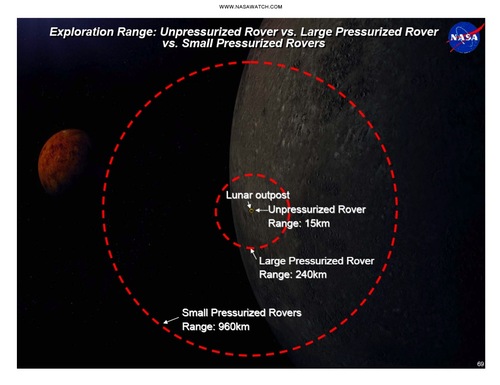 ;br>
;br>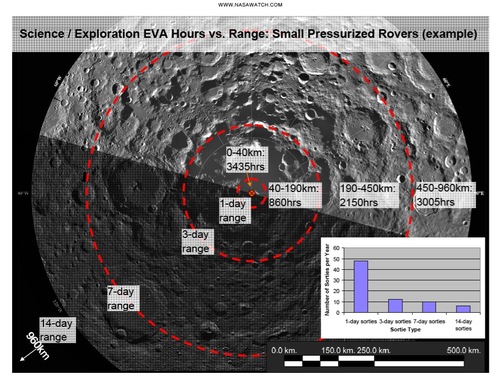
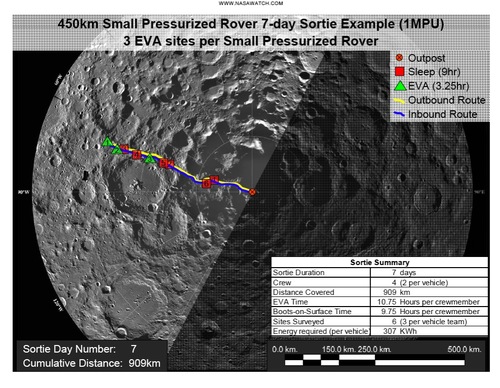
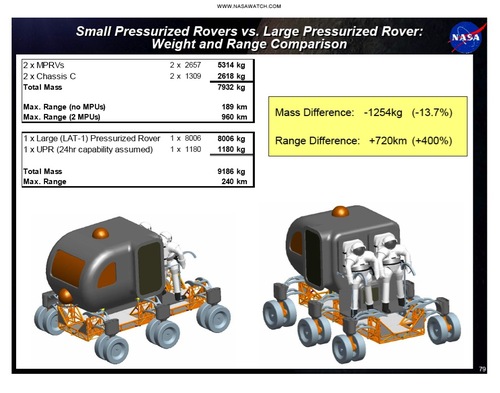
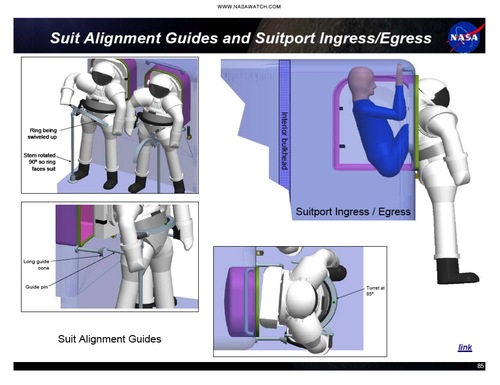
Waiting for Fotino
Posted on Friday, September 28, 2007
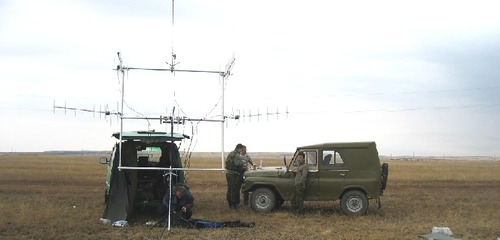
A group of Polish/Russian engineers were installed on the Kazach steppe in anticipation of the Fotino capsule landing. Unfortunately, it never came...
Space Roulette
Posted on Wednesday, September 26, 2007
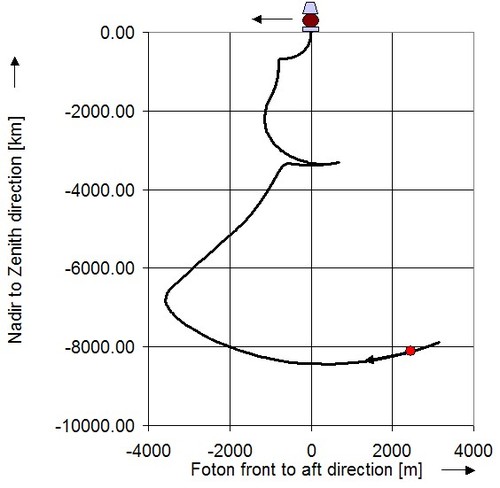
The YES2 mission is still ongoing...surprisingly! Turns out the tether deployed only 8.5 km of the intended 30 km, resulting in a much lower delta-V decrease than anticipated and leaving the capsule circling the Earth instead of landing within a couple of hours after ejection. The team is currently assessing the orbital parameters, providing a first estimate of the capsule remaining in orbit for at least 4-11 days more before re-entering into the atmosphere. And even better, they have at this time no clue where the capsule is going to land. Even if its technically considered a non-nominal situation, the extended mission and uncertainties of where it is going to land make it even more exciting. I have informed whether they are taking bets on the eventual landing site but sofar no reaction ;). Read more details at this mission summary.
YES2 mission ongoing
Posted on Tuesday, September 25, 2007
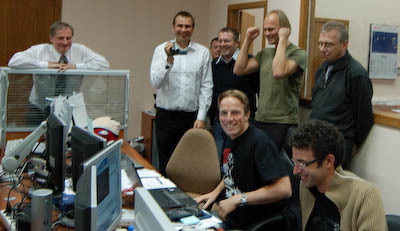
YES2 has deployed safely and the team currently awaiting a signal from the capsule which has supposedly landed somewhere in Kazachstan. Read the full up-to-the-minute story on the YES2 blog.
YES2 almost ready for deployment
Posted on Monday, September 24, 2007
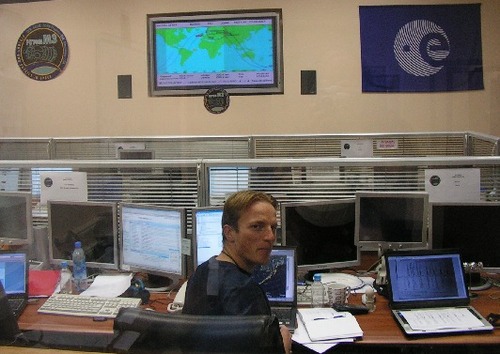
The YES2 mission is almost ready to go. If the temperature lords permit, tomorrow, Tuesday 25th September, the Fotino capsule will be ejected from the Foton spacecraft and with the use of a 30-km tether swung back to the Earth to a targeted landing point somewhere on the steppes of Kazachstan. Follow the news as it seeps in from Moskow Mission Control TsUP at the YES2 mission blog.
Evolutionary benefit from Space Explo
Posted on Thursday, September 20, 2007
Reading up on the Google Lunar X Prize at the BBC I come across this quote from Peter Diamandis, X Prize founder (and ISU founder):
"We are confident that teams from around the world will help develop new robotic and virtual presence technology, which will dramatically reduce the cost of space exploration," said Dr Peter Diamandis, chairman of the X-Prize Foundation in a statement.Working in the space business, one question that keeps me busy these days is trying to understand which of the technologies to be developed for the "space race to come" will influence society on the long run. Computer chips have gained evolutionary benefit from both the military (nuclear missile guidance systems) and the '60 space race (Apollo descent stage). If history accounts for anything, it is pretty clear spin offs from endeavours such as space exploration will play out in society in unexpected ways. With the X-prize's emphasis on robotic exploration and telepresence technologies, I bet you there will be more of this fusing into society in the decades ahead, the question is only how exactly. By the time space exploration gets anywhere, I doubt we will experience the world as we do today.
YES2 in orbit update
Posted on Tuesday, September 18, 2007
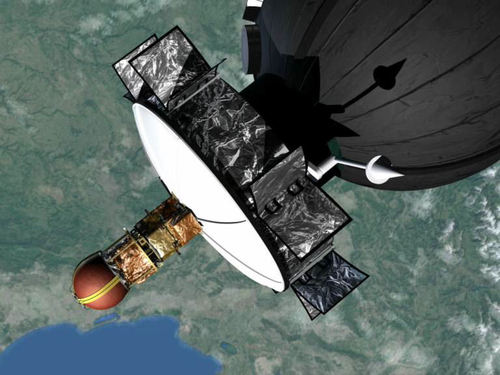
Foton is making its rounds around the Earth with YES2 switched off. Apparently the Russians don't have active attitude control on the Foton platform so they are reluctant to switch on YES2 for a check out of the temperature profile because it might be too hot or too cold (...don't ask me about the logical behind this reasoning...;). The first time the team will find out whether or not their baby is still alive in orbit is next week Tuesday when the final sequence starts. Untill then, don't let go of those crossed fingers!
YES2 launch: sketchy videos from ESTEC
Posted on Monday, September 17, 2007
New head of the education office Francesco Emma gives a brief introduction about YES2 project:
The actual launch "no countdown, just press the button" style:
YES2 in orbit
Posted on Friday, September 14, 2007
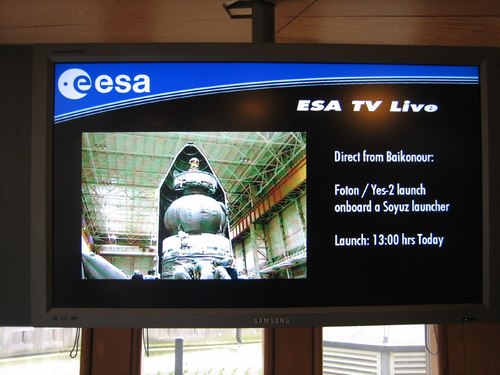
YES2 had a flawless ride to Low Earth Orbit today lifting off from Baikonur Space Center at 13:00 CET sharp (more at ESA's webportal). Back here at ESTEC, a pretty large crowd gathered to witness the launch via a live satellite link. The weird thing with these Russian launches is that they don't have a countdown, so while an ESA official was filling the silence with everybody awaiting the launch, suddenly the rocket engines lit up, the tower cleared away, and the rocket lifted off from the launch pad with a big roar. In less than 3 minutes, the cameras couldn't see the rocket anymore and the only news of a succesful orbit insertion came some 9 minutes after lift-off when a voice over a barely hearable telephone line from TsUP, Moskow Mission control, gave the good news of an all-nominal mission....that was it! Somewhat of an anti climax. But alas, the real YES2 mission will anyway not start before September 24th when the command is issued to release the Fotino capsule from Foton and the 30-km tether will swing the capsule to a targeted landingsite on the Kazach steppe. I hear there is a 'silence' policy over at ESA in terms of covering the actual YES2 mission as it unfolds (after all, it could go wrong...duh!?), so I'll try to give you some updates here and there although its probably gonna be sparse because I am not in the direct loop anymore and I have some other priorities to take care of. The YES2 team will be over at TsUP at the moment supreme so there is always the YES2 blog. Btw, did any of you try to watch the event online? Did it work? I got a message saying the live stream was down before it even started (what's the phrase again '...its no rocket science...!?'). Ps, video of the launch I captured at ESTEC is coming. I am presently in a restaurant in Leiden with a very(!) asynchronous connection (upload very tight), so will do this over the weekend. 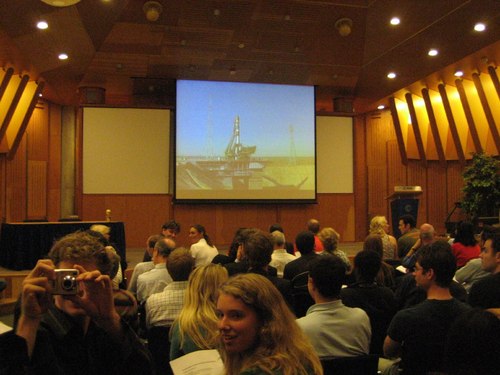
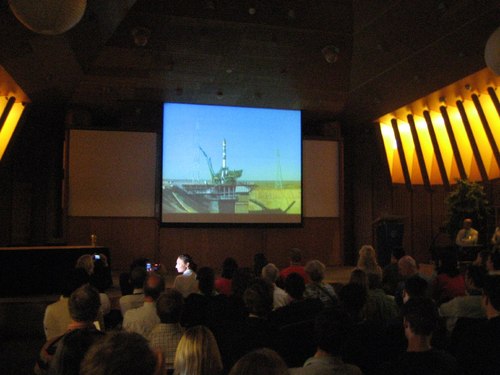
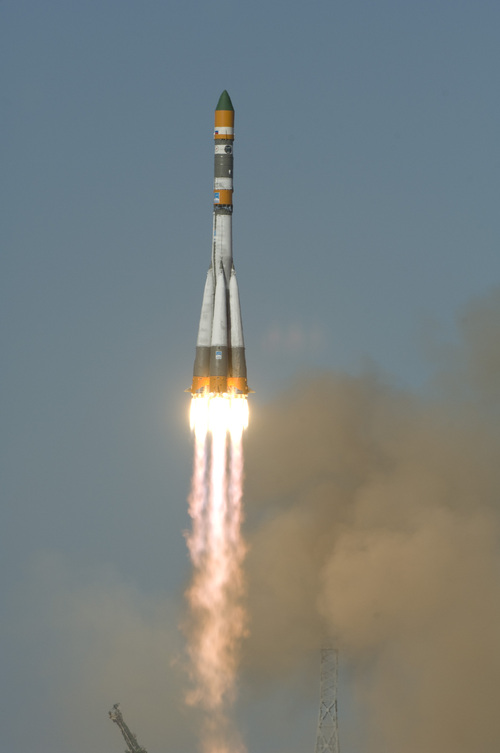
Google + X PRIZE = Lunar X PRIZE + Google Moon
Posted on Thursday, September 13, 2007
Update: more at Wired & CNN.
Just in: Google Sponsors Lunar X PRIZE to Create a Space Race for a New Generation. More at googlelunarxprize.org. At the same time, Google's LatLon blog announces an update to their version of Google Moon, an outcome of the collaboration between Google and NASA Ames.
YES2 ready for launch (oh, and Foton-M3 too ;)
Posted on Thursday, September 13, 2007
Tomorrow (friday 14th) is the big day: YES2 will be launched from Kazachstan onboard a Soyuz rocket. I'll be heading out to ESTEC here in the Netherlands to be part of the official ESA videocast of the launch (too bad I didn't make it out to Kazachstan). Word from Erik@Delta-Utec has it that the launch will also be available through the Internet @ this link. If you really want to get into the spirit, before launch time (around lunch time 13:00 CET, see schedule here) have a look at this splendid YES2-Baikonur photo album by Fabio de Pascale, one of two YES2 engineers on site at the Baikonur space center to witness the launch in person (see here for more good prep images, like the ones below). [below Image Credits: ESA - S. Corvaja 2007]
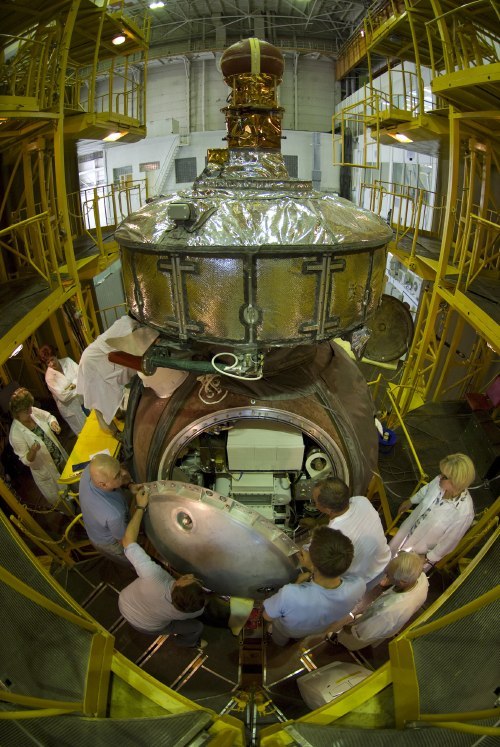
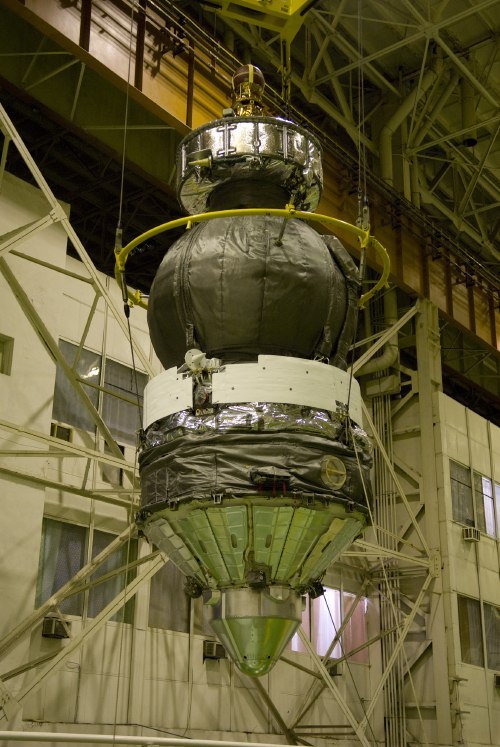
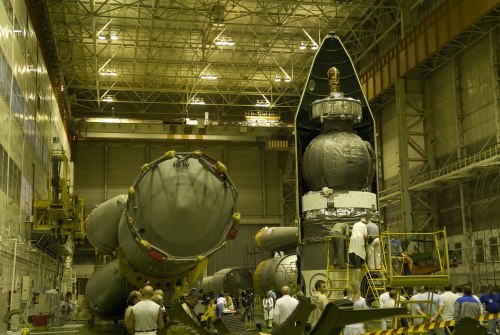
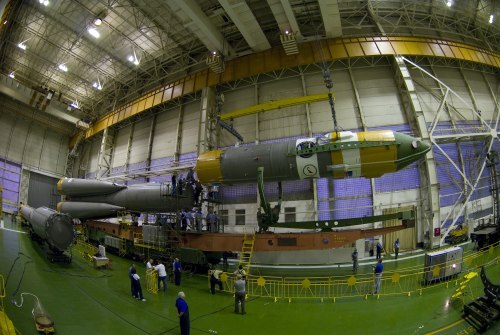
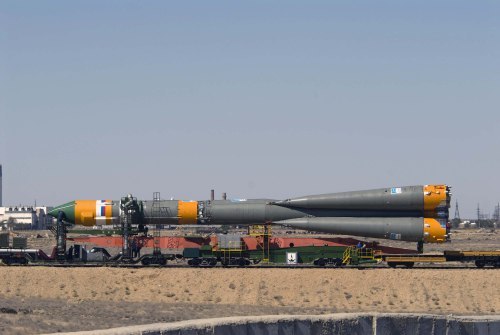
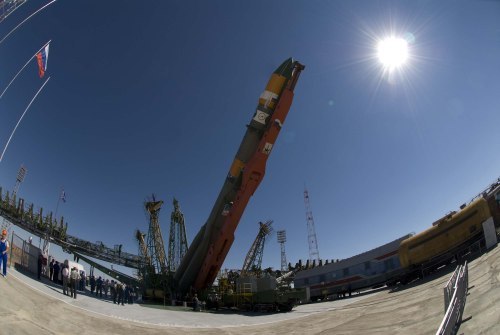
Today's NASA Slogan: All Your Space Are Belong To U.S.
Posted on Sunday, September 9, 2007
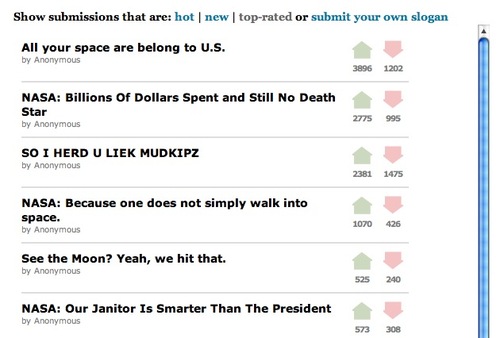
Wired is running a crowdsurfing NASA slogan contest to see if its readers can come up with a better slogan than the recently selected "NASA explores for answers that power our future". Starting out as a gimmicky blogpost (read a long list of proposed-slogans-as-comments here), the large number of entries have moved the contest to a more sophisticated system (the NASA Slogan Reddit Tool!) where people can cast votes on the various entries. Above image shows the top-6 of today, Sunday September 9th 2007.
Sofar, many of the proposed slogans go back to NASA's glorious past, poking fun at present-day achievements. With the CEV vehicle (aka Orion) resembling Apollo all the way down to the parachuted landing (water or land, what does it really matter?), having a slogan referring to the successes of the past seems to me to match NASA's own state of mind (yep, its the the wisdom of crowds allright). In that sense, having a slogan bringing back the glory days of NASA isn't all that far fetched if you ask me...I mean, how inspirational is this graph: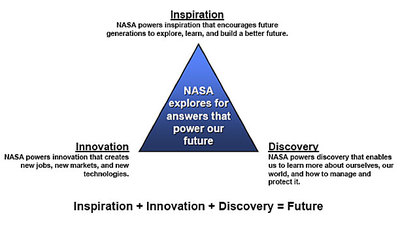
compared to this image: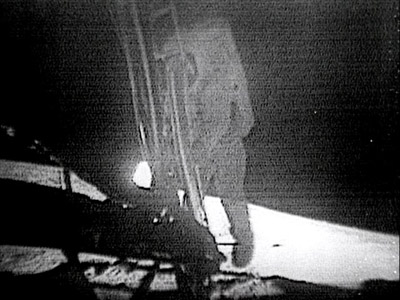
Would be nice to have the WIRED contest run indefinite while NASA's Vision for Space Exploration unfolds, having something like a NASA Slogan Zeitgeist over the coming decades. Btw, if you're interested, some more background information on NASA Strategic Communications can be found in this powerpoint pdf.
YES2 Launch Getting Closer
Posted on Wednesday, August 29, 2007
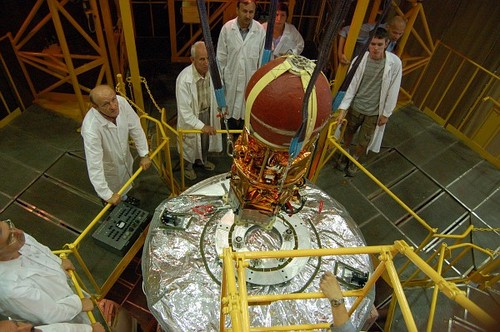
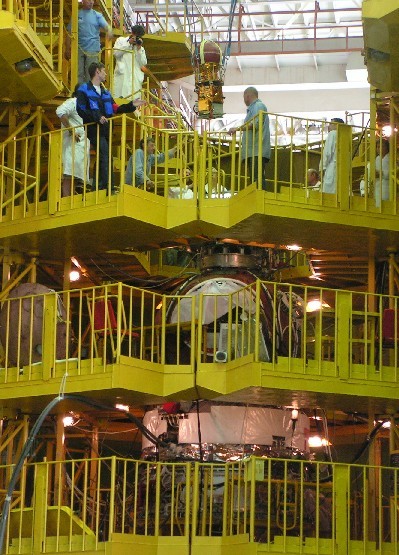
More at the YES2 blog and ESA's YES2 website.
Google Turns To The Sky
Posted on Thursday, August 23, 2007
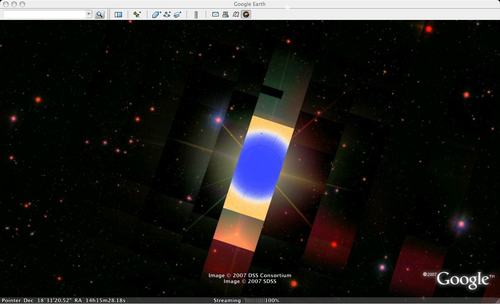
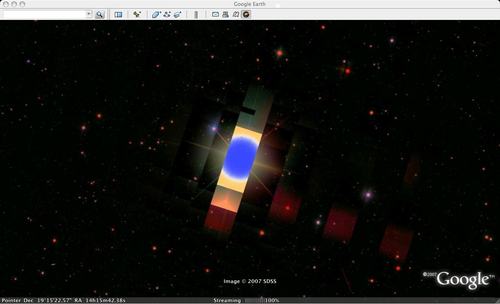
If you haven't heard about Google Sky yet, well, than you're not reading Google LatLon, Google Research blog, the Official Google Blog (that's a lot of Googleblogs...), Google Earth Blog, OgleEarth, BBC NEWS and all the rest of the Blogosphere which has found their way to Google Sky. I'm a bit short on time so I'll just let the others do the first scoop of its features. I plan to come back with some personal insights when I find a chance to spent a good few hours with it. Diving in for the first time, above views I found quite intruiging as a universe kind of equivalent to the patchy Earth that is Google's Earth.
The Future is Progress, Not a Destination
Posted on Thursday, August 9, 2007
Just got word from my collegue Erik van der Heide over at Delta-Utec that the video of the Foton-M1 launch failure (oct 2002) has been uploaded to Youtube (see below). Don't you just love web2.0 ;) Lets hope Foton-M3 carrying YES2 to orbit has a better faith a month from now.
SciFoo
Posted on Thursday, August 9, 2007
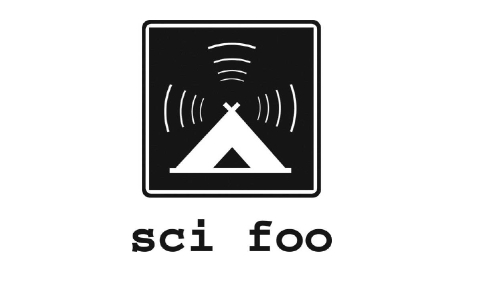
Update from Duncan Hull (keep me posted Duncan!):
There is talk of EuroFoo, probably to be held in Cambridge. There will also be "bar camps" again, in Cambridge and soon in Manchester.
Man, I wish they'd bring SciFoo over to Europe, how cool is this ? To get a taste, have a look at this Flickr series ! Maybe a SpaceFoo? Probably a bit too exciting for ESA, but ISU perhaps?
RocketCam
Posted on Friday, August 3, 2007
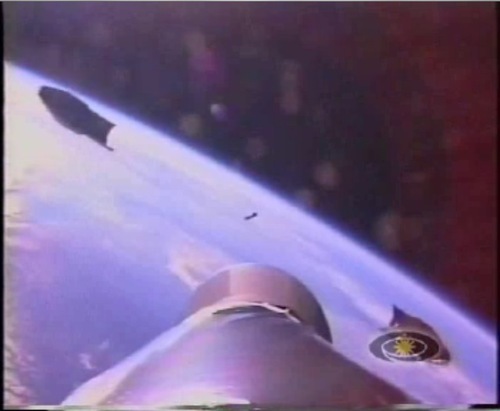
Another interesting 10-year anniversary: RocketCam (SpaceDaily post). Brilliant stuff (check this video!). Around the same time as Mars Pathfinder (earlier post), didn't know, but both firsts got me started on the space explo - cyberspace thing. Its the media stupid! Funny how nowadays everybody is zooming into the Earth from space, while these fragile rockets are trying to escape it...
Catch up time
Posted on Tuesday, July 24, 2007
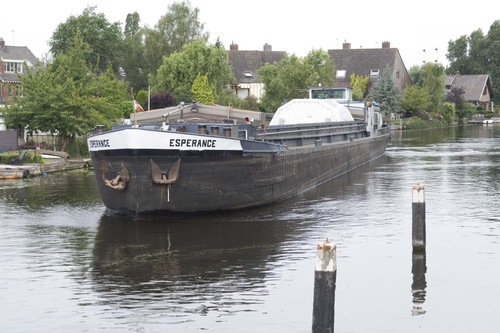
Bloggin' has been sparse these last few weeks, partially because of my latest dive into UGO development. Assuming you read OgleEarth and Google Earth Blog, you are pretty well covered on interesting news coming out these last few weeks. Just a few things worth (re)blogging:
- The Automated Transfer Vehicle (ATV) was transported from ESTEC to Kourou for launch to the ISS next year. There is a nice photo report at ESA, amongst which above photo. A Billion+ craft going through the Dutch canals ;)
- The first Metaverse Roadmap (MVR) is out. An inspiring read!
- NASA has now its own layer inside Google Earth. Still rather rudimentary, like the ESA layer, but a good start. (via Google LatLong blog)
- Barnabu blog posted two space related kml's showing the Moons and the planets in a solar system context (via GEB). Its latest addition, the Cosmic Microwave Background Radiation
- OgleEarth has been ogling Mars. And again. Looking at the word 'ogling' a couple of times, its about time to have a better understanding of what to ogle actually means. As a Dutchman I usually assume I have a comprehension of the English language, but most of the time I know I miss the subtleties of knowing the real English use of a term. For my own understanding, here is the Merrian-Webster dictionary explanation:
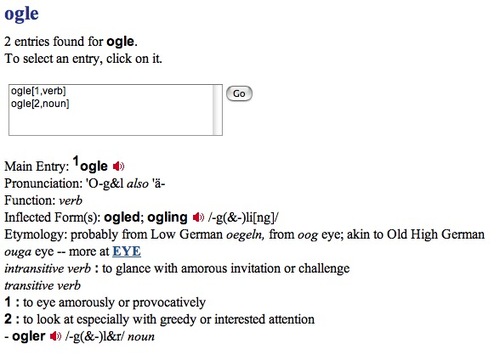
Aha! How about OgleMars.com Stefan? ;)
While I was away
Posted on Wednesday, July 11, 2007
Been to Transformers earlier this week. Great visuals, poor screenplay. One thing was pretty funny. Where Europe mourned the loss of its Beagle2 lander (it was after all a UK lander on an ESA spacecraft), this movie simply infuses the meme that Beagle2 was actually a NASA lander (a rover at that!) which wasn't lost at all, it just brought back some cosmic top secret imagery of Decepticons rooming the red planet. Who said ESA has a PR problem? Check out above video for some serious transformer action.
Human-Machine-Nature interfaces
Posted on Monday, June 25, 2007
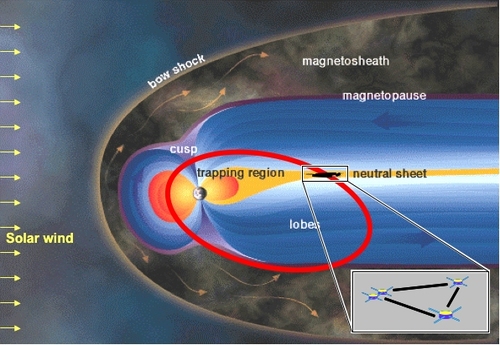
Quite some news recently about human-machine interfaces coming out. In particular the non-intrusive ones like this collaboration between Graz and University of London (check out this video ;). Not related, but OgleEarth is back at blogging, and he brings back some cool footage from ISDE5. Like he says, a possible hint at where things might be going with digital globes. Now what i'd like to see is a near real time vis of the Cluster data in one of these domes...magnetosphere storms as they happen...These four ESA satellites are up there now, so how difficult could that be?
Oh, and a quick note about an interesting conference coming up:
- The 11th International Conference on Information Visualisation from 2-6 July, interconnected with this Vizualisation summit
Participatory Exploration
Posted on Monday, June 25, 2007
Just in:
- An article about Pete Worden's talk at the ISDC through Second Life
- NASA Ames to Host Summit of Technology and Communications Experts
ISS & Time...
Posted on Friday, June 15, 2007
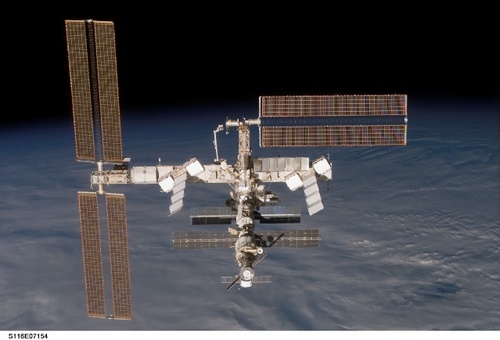
Wow....!! What a rant following a story about the ISS almost becoming a robotic (ie no-humans-to-take-care-of-it-in-space) spacecraft (via NASA Watch).
Light posting ahead
Posted on Saturday, May 12, 2007
Haven't been very active on this blog lately, which is mainly due to my full focus on the development of my UGO project, making me less susceptible to reading my section of the blogosphere on all the news coming out on a daily basis. I haven't finished my first build yet, so this light posting will likely continue for the coming days/weeks untill I finalise a first UGO app. In the meantime, some interesting developments worth noting:
- Search Engine Land (definitely a good read)
- a joke
- Anil Dash post
- News.com
And of course there is the news of a new WorldWind JAVA release.
Updated blog feed
Posted on Tuesday, May 1, 2007
Mmm, turns out I already had a FeedBurner account with several subscribed readers to this blog (re: earlier post). Strange how things like feeds can get this complicated...;) Anyway, to keep things organised I decided to delete the new account and merge its feed with the already existing one. For those of you who subscribed to the new one in recent weeks, please visit my blog's webpage and (re)-subscribe one more time to the FeedBurner link on the right.
To check if you have the correct feed, the correct FeedBurner account should now have the following URL: http://feeds.feedburner.com/tobedetermined (for Safari on OSX this should read: feed://feeds.feedburner.com/tobedetermined)
Thanx again...
FeedBurner goes outer space...
Posted on Tuesday, March 27, 2007
Finally...where can I sign up for a feed from the Mars Exploration Rovers or, say, the International Space Station?
A couple of months ago I stumbled upon this ad by FeedBurner which I found kind of intruiging. Thinking about the convergence of user generated content, games like Spore, collective intelligence, NASA teaming up with Google, Google Earth becoming more mainstream, locative media art, blogjects, my project with Jeremy hight 'Floating points', The Internet of Things, advertisements 'in space' and satellites as blogging objects, it seemed they tapped into the right kind of nerve with this particular add. There won't be anybody blogging from Jupiter anytime soon, but considering that satellites have been blogging since the early days of Sputnik (audio), the idea of the blogosphere moving into outer space doesn't strike me as all too crazy (let alone the advertising dollars). The main question that strikes me is: what would somebody something near Jupiter blog about? Any thoughts?
(note: the above flash file was kindly provided to me by FeedBurner after some back and forth communication on my request to host the ad on my blog. Sofar, I haven't been able to make the click-through URL for this particular ad work, so in return I am happy to host their FeedBurner ads URL. Thanks Jessica.)
Germany to the Moon
Posted on Sunday, March 4, 2007
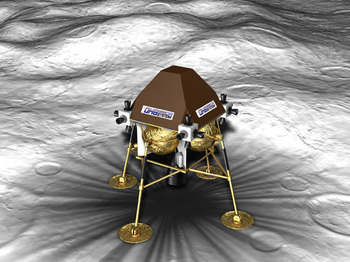
OHB System seems to have some good lobbyists in the German parliament (FT article in German). Here are some more computer renderings of the system.
Upper stage breakup in space
Posted on Tuesday, February 27, 2007
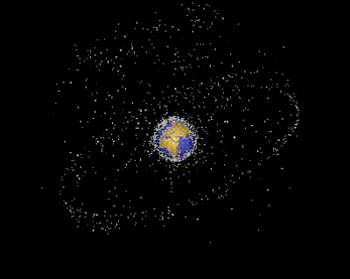
After hearing about it at the ISU symposium last friday, I am reminded about a new breakup in space, this time an unintended breakup of a Russian Breeze-M upper stage. BBC has the story. I wonder whether when we will see a Google Earth version this time...
traceroute Rosetta
Posted on Tuesday, February 27, 2007
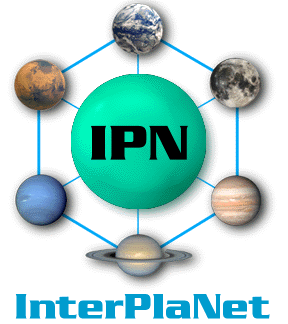
Related to my previous post on Rosetta's view of Mars, I just read on Slashdot about the plan Vint Cerf is working on to expand the Internet into the Solar System:
Communication between a rover operator on Earth and a rover on Mars, via a relay orbiter, can't use standard Internet protocols end-to-end. That problem is at the root of a lot of the design work we're doing for the IPN... As part of the NASA Mars mission programme, the project aims to have by 2008 a well-functioning Earth-Mars network.An excellent read I must say, the Slashdot discussion, especially because only at the very bottom of the page does it actually start talking sense, the rest is just geeks getting off on geekjokes. Thought this one was quite to the point:
Parts of this planet we live on don't even have access to a broadband Internet connection, and now they want to plug Mars on the network? Talk about priorities...But then again:
parts of this planet are even more worthless than the lifeless Mars. Leave the stragglers behind..keep pushing forward. -they don't call it the human race for nothing
The idea to expand IP into the Solar System has been around for a while, and to me it obviously makes perfect sense. Evolution you might say. It has been working in Low Earth Orbit onboard an SSTL satellite for quite a while already (video @ Cisco), and Cisco is seriously interested to get deeper into the game.
Rosetta's view on Mars
Posted on Monday, February 26, 2007
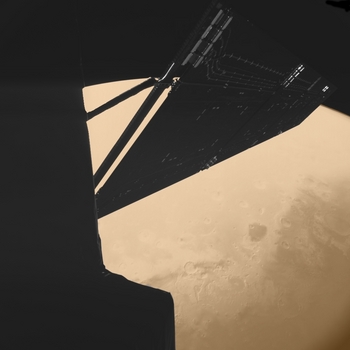
Click to enlarge
Quite an exquisite image! Biggest impression: hardly any atmosphere. Makes it feel very sterile, artificial almost, as if it was surrounded by the blackness of virtual space...digital darkness.
More about Rosetta's flyby of Mars at the European Space Agency.
The Space Economy
Posted on Friday, February 9, 2007
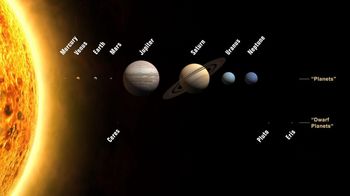
Click to enlarge
How to market a +30 year product/programme like the US Vision for Space Exploration (VSE)? Luckily for us some folks over at NASA are thinking about it:
“As I see it, questions about the Vision boil down to whether we want to incorporate the Solar System in our economic sphere, or not. …The ultimate goal is not to impress others, or merely to explore our planetary system, but to use accessible space for the benefit of humankind.”
Dr. John Marburger
The President’s Science Advisor
Speech to the 44th Robert H. Goddard Memorial Symposium
March 15, 2006
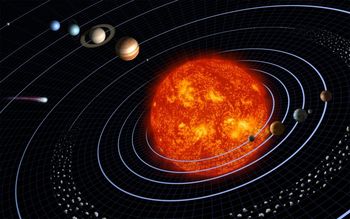
Click to enlarge
YES2 AIT @ ESTEC
Posted on Friday, February 9, 2007
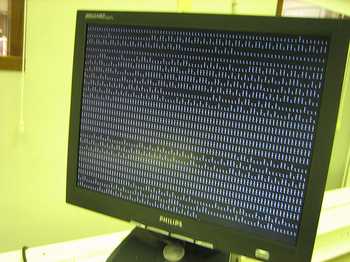
Delta-Utec, the company I have been working with the last couple of years, recently moved its whole Leiden office to ESA's research facility ESTEC in Noordwijk, The Netherlands. The whole YES2 team of students, Young Graduate Trainees and Delta-Utec staff are at ESTEC to succesfully complete the final Assembly, Integration and Testing (AIT) of the YES2 satellite before it is integrated on the Foton-M3 platform and launched later this year on a Russian Soyuz. I have been spending the last couple of days in this highly inspirational environment, working on the follow up of the YES2 mission, working title 'Polyspheres'. Here are some of my impressions sofar.
Highly relevant ads
Posted on Sunday, January 21, 2007
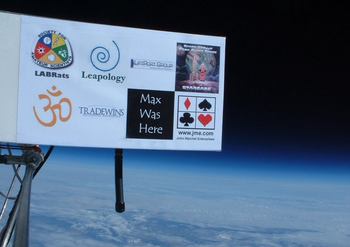
Click to enlarge
Following news on Google's possible acquirement of an in-game advertising firm (first read on OgleEarth), I finally found a reason to upload this image on advertisements in space...When will Google's next ad frontier (WSJ subscription) coincide with the final frontier, either real or virtual? Is there really anything against serving highly relevant ads once people start returning to the Moon? And would it be able to support some good space exploration initiatives? Or even better, some new Earth Observation missions following the warning from the US National Academy of Sciences that the US is underfunding its EO capabilities in the years to come (WSJ editorial: blinding ourselves in space). Its basically in our own interest to have these missions, so why not fund them through Google Adsense...
tobedetermined finds...
Posted on Monday, January 8, 2007
- Just in: Google teams up with a large group of universities, research institutions and private companies to become the archival experts for the Large Synoptic Survey Telescope (via OgleEarth). Makes sense to me ;)
- Backlog: OgleEarth shares some interesting reflections in this post on the possibilities following December's collaboration announcement between Google and NASA.
- This year is the 50th anniversary of the launch of the first articificial satellite Sputnik in October 4th 1957 (Listen to the sound of Sputnik as it passed over in those days). This weekend's M special of the Dutch newspaper NRC handelsblad is all about the Internet. Their introduction (my translation):
1 billion Earthlings connected to the Internet
50 years ago the Russians launched their Sputnik. The Americans got scared shitless and developed an invulnerable military information network which saw the birth of the Internet. Today, the net belongs to the massess. - ESA news: First 3D map of the Universe's dark matter scaffolding
- Google Earth Blog has the story of a French company Pict'Earth offering a remote control plane with camera capturing realtime images for Google Earth. OgleEarth picked up the story and expands on it
- Webcasts are available from the 2nd Space Exploration Conference in Houston 4-6 December last year. Unfortunately they're coded in Realplayer, so no offline viewing/listening
Navigating outer space
Posted on Friday, January 5, 2007
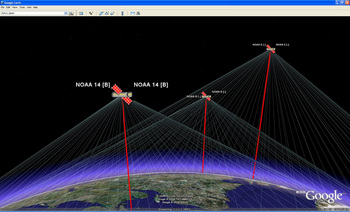
Click to enlarge
Update monday 8 January: I have edited most of below text yesterday after originally posting it on saturday evening. Reading through it again, I noticed how it touches upon a relevant aspect for me of the mediation of outer space through cyberspace: the interface to the planets and 3 dimensional outer space. This post might well be the start of a longer text on this topic.
As you probably noticed, I've been mostly away from the blogosphere the last 2 weeks, spending some enjoyable 1st life here in Amsterdam. As a result, I am now looking at a backlog of ideas, thoughts and interesting stuff out on the web related to this blog's topic which I hope to post about in the coming days & weeks (and a happy new year to all of you of course!). First on my list:
The SpaceNavigator™
I received mine from Germany earlier this week and it turned out even better than I expected. It really is an excellent tool for flying around and 'travelling' in Google Earth. For more indepth reviews of the device, see OgleEarth and GEB.
Using it brings back memories of when I was studying in Delft. It must have been around 1995 when I took a course in 3D modeling and virtual reality. At the time, I was heavily into all things cinema and especially Andrei Tarkovsky, so as part of the VR course I set out to model the cathedral from the final scene of his movie 'Nostalgia'...it was only a test case, and I unfortunately never finished it (the course was over before I could), but during the course I got my first flying lessons in virtual spaceland using one of these nifty interfaces (at that time they were called space mouse). I remember the pleasure of navigating with 6 degrees of freedom through 3 dimensional space, flying through my half finished cathedral. Using the SpaceNavigator now allows me to do (almost) the same stunts in Google Earth. Its a bit like I imagine real life cessna flying could be like if you do not live right under the ![]() airspace of one of Europe's major airports Schiphol.
airspace of one of Europe's major airports Schiphol.
The biggest surprise after firing up Google Earth with my new SpaceNavigator came from the possibility to look up, to look at the stars, away from the Earth, something which with normal keyboard navigation I never managed to do. Suddenly Google Space starts to make a lot more practical sense. Its like what Micheal T Jones (Google Earth CTO) talked about in his Google Earth talk a year ago, where he, refering to work by Tjalling Koopmans, discusses how we as humans are shaped by our tools (as in 'the medium is the message' by Marshall McLuhan).
Below image is one such example of a Google Earth view I never managed to get before my SpaceNavigator arrived (the Earth is somewhere below the screen). And I like the way Windows confirms plugging in my SpaceNavigator with "Found new hardware: USB human interface device" ;)).
Having been stuck with the Earth-centric view in all of todays digital globes out there (and/or Moon/Mars centric in the case of WorldWind), the opportunity to look away made me wish for more. I for one would like to navigate through outer space in Google Earth, to turn around and head for the Moon. Sofar, releasing my SpaceNavigator makes me instantly flip back to the Earth, as if my sticky eyeballs are glued to it.
I have seen navigating through 3 dimensional 'outer space' in Celestia, an open-source 3 dimensional space simulation available for free on the web. During the holidays, I played around with it again after seeing it on a big screen at the NASA Ames exploration Center last November where it was used to explain to the audience about the solar system and beyond. The interface is somewhat different from Google Earth and the others, but once you get the hang of it, its really enjoyable to navigate through the Solar System, have a close up view of the Jupiter moon system, take a warp drive outside our own galaxy and safely return back to our 'default' Earth.
tobecontinued...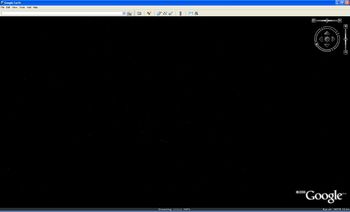
Click to enlarge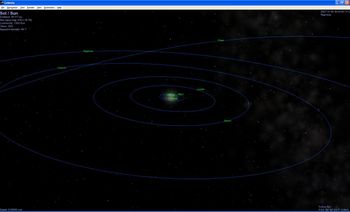
Click to enlarge
Extra spacewalk for Christer Fuglesang
Posted on Sunday, December 17, 2006
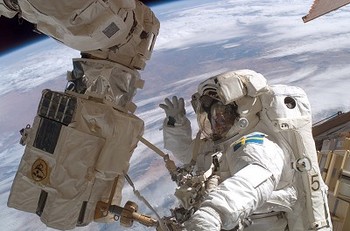
ESA has the news of a new spacewalk for ESA astronaut Christer Fuglesang, tonight at 19:47 CET. Follow it live via NASA TV.
Christer Fuglesang out for a walk
Posted on Thursday, December 14, 2006
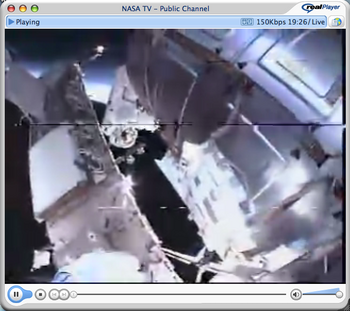
Update: they are back inside (01:21 CET)
For those of you connected to the Internet right now, Christer Fuglesang is out taking a walk.
YES2 is bloggin' again
Posted on Thursday, December 14, 2006
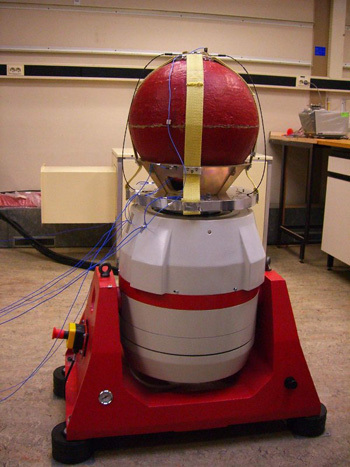
After a couple weeks offline due to an unfortunate hack, the YES2 website is back...as a blog! Yes, satellites also blog...
Finally we get to see some of the testing presently taking place on YES2 at ESA/ESTEC in order to deliver the flight hardware to ESA early next year. YES2 is scheduled for launch onboard Foton-M3 in September 2007. Keep up the great work guys...and keep that satellite bloggin'...
YES2 Google Earth
Posted on Thursday, November 16, 2006
Here is another one of my older posts (May '06) which I managed to bring back from digital oblivion by specifically interrogating The Google about my domain name and looking at the cached pages (search string 'site:tobedetermined xxxx'). Its only good for text though, cause other stuff like images is not cached (thanks for the tip Jurryt).
Recovered post:
Following up on my suggestion about the resemblance between the 3D GoogleEarth implementation of the TWA flight-800 disaster and the 2.5D visualisation currently available in YES2's Re-Entry Simulator Tool (REST), Marco Stelzer of the YES2 team at ESTEC has done a great(!) job implementing a REST2GoogleEarth output file option in REST.
The REST simulator, which is part of the larger YES2 mission simulator YESSim, is currently under development for ESA's 2nd Young Engineers' Satellite in order to study and control the landing of the YES2 'Fotino' re-entry capsule. The educational YES2 mission is designed to return a small capsule from space to the Earth using a 30 km long tether. Its launch is currently sheduled for October next year from the Russian launch base Baikonur onboard the Foton M3 spacecraft.
One of the REST2GoogleEarth output files developed by Marco provides an elegant display of the re-entry trajectory as calculated by REST, starting in this case from an initial altitude of ~253 km. Clicking on one of the dots brings up the longitude, latitude, and altitude of the capsule at that particular time in the re-entry (Directions: To here - From here ;) ). In this simulation, the time from start at 253 km to landing of the capsule in Kazachstan takes ~30 minutes. Its not so visible in this particular simulation, but I remember from an earlier one that the influence of the wind (through implemented wind models) on the final stage of descent comes out very nice in the GE visualisation.
In another section of the simulation tool, this 2nd REST2GoogleEarth output file shows the outcome of a monte-carlo simulation of the proposed landing site of the capsule, where each little dot represents a calculated landing point of the capsule. If you zoom out, you start seeing the landing ellipse of the Fotino capsule, representing the 3-sigma chance distribution of the actual landing position of Fotino.
For more on YES2, see their YES2 website (update: which is currently down I believe after having been hacked and them not having the time to bother with a website while building a satellite...). Once its back on, here is a short movie I shot & edited back in 2003 called YES2 meets...Michiel Kruijff with a brief introduction to the YESSim simulator.
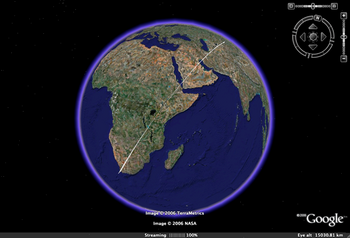
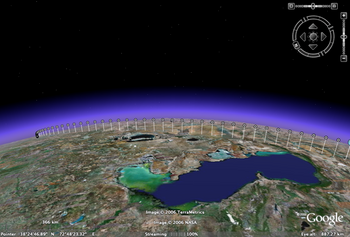
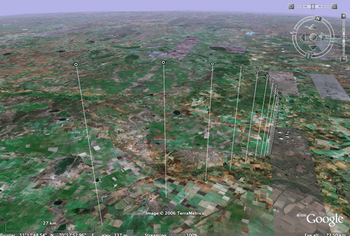
ESA teams with Google Earth
Posted on Thursday, November 16, 2006
A couple of days after Frank Taylor from Google Earth Blog first noticed the addition of ESA imagery as a layer to Google Earth, ESA comes with a webstory. Nice to see that it gets around, like here, here and here. Btw, Frank makes a good point in stating that he is a bit dissapointed to see that the images are not directly overlayed on Google Earth but instead appear in a pop up window with a link to the image on the ESA web. Room for future developments i'd say ;)
War visible from Space
Posted on Wednesday, October 4, 2006
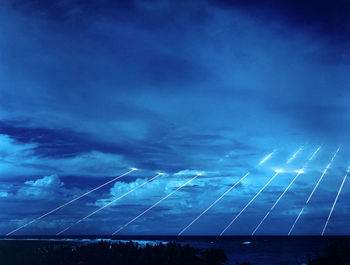
The 2-week visit of Anousheh Ansari to the ISS was definitely one of the more interesting events in space lately. Her Space blog gives a very open, personal and compassionate insight into the daily activities during her trip, from the very good (first view of Earth from space) to the rather bad (space sickness and nowhere to go...). In a related article on spacedaily, this quote caught my attention:
"According to one of her fellow space travellers, Israel's four-week bombardment of Lebanon was visible to "the naked eye" from space."
Mmm...makes you wonder what you'll think when you see these little light flashes down there on the ground...Which brings me to the intruiging photo depicted here above.
Working on a concept for new re-entry technology demonstration mission for ESA (which if launched will use a recoverted USSR nuclear missile SS-18-N (aka VOLNA), I get introduced to quite some spectacular
The future is process, not a destination
Bruce Sterling
Everything is ultimately becoming information technology
Ray Kurzweil
Data is the Intel inside
Tim O'Reilly
There is only one machine and the web is its OS
Kevin Kelly
The medium is the message
Marshall McLuhan

